
About UsThe Numismatic Bibliomania Society is a non-profit association devoted to the study and enjoyment of numismatic literature. For more information please see our web site at coinbooks.org SubscriptionsThose wishing to become new E-Sylum subscribers (or wishing to Unsubscribe) can go to the following web page link MembershipThere is a membership application available on the web site Membership Application To join, print the application and return it with your check to the address printed on the application. Print/Digital membership is $40 to addresses in the U.S., and $60 elsewhere. A digital-only membership is available for $25. For those without web access, write to: Charles Heck, Treasurer AsylumFor Asylum mailing address changes and other membership questions, contact Chuck at this email address: treasurer@coinbooks.org SubmissionsTo submit items for publication in The E-Sylum, write to the Editor at this address: whomren@gmail.com
BUY THE BOOK BEFORE THE COIN |
- WAYNE'S WORDS: THE E-SYLUM NOVEMBER 15, 2020
- ASYLUM WINTER 2020 ISSUE PUBLISHED
- NBS WEBSITE, E-SYLUM FORMATS, AND SOCIAL MEDIA
- NEW BOOK: THE CONFEDERATE TREASURE TRAIN
- RITA ROSENBLUM (1948-2020)
- BOWERS & MERENA'S THE COIN COLLECTOR ON NNP
- VIDEO: SILVER DOLLARS AND THE MS-64 GRADE
- NEWMAN PORTAL WEB SEARCH
- JEWELL, HAMELBERG AND THE SPECIAL ADAMS-WOODIN
- ON DIGITIZING THE NATIONAL NUMISMATIC COLLECTION
- MORE ON PANDAAMERICA FOUNDER MARTIN WEISS
- NOTES FROM E-SYLUM READERS: NOVEMBER 15, 2020
- MORE ON THE MARYLAND JESUIT PLANTATION
- CARL WOLF REMEMBERS CLYDE HUBBARD
- VOCABULARY TERM: PLAQUETTE
- EDWARD DEAN ADAMS (1846-1931)
- 2021 FUN CONVENTION EDUCATIONAL PROGRAMS
- NUMISMATIC AUCTIONS LLC SALE 65 SELECTIONS
- COLTRANE NORTH CAROLINA CURRENCY TOUR
- FEISEL DECEMBER 2020 EXONUMIA SALE
- NUMISMATIC NUGGETS: NOVEMBER 15, 2020
- GOLD COINS FOUND IN JERUSALEM'S OLD CITY
- GOLD DINAR HOARD FOUND IN EGYPT
- THE CURSE OF THE BURIED TREASURE
- 17TH-CENTURY COIN HOARD FOUND IN POLAND
- THE GREAT RECOINAGE OF 1696
- SIAMESE AND THAI ORDERS AND DECORATIONS
- RUST RARE COIN STOCK SALE
- STOLEN BOOKS FOUND IN ROMANIA RETURNED
- LOOSE CHANGE: NOVEMBER 15, 2020
- BRUNEL'S PROBLEMATIC GOLD HALF-SOVEREIGN
- FEATURED WEB SITE: MINING MEMORABILIA
Content presented in The E-Sylum is not necessarily researched or independently fact-checked, and views expressed do not necessarily represent those of the Numismatic Bibliomania Society.
WAYNE'S WORDS: THE E-SYLUM NOVEMBER 15, 2020
 New subscribers this week include:
Clint Kucera of North Carolina courtesy of Jim Ehlers;
Hunter Hicks,
Mark Smith and
Tom McGowan.
Welcome aboard! We now have 6,594 subscribers.
New subscribers this week include:
Clint Kucera of North Carolina courtesy of Jim Ehlers;
Hunter Hicks,
Mark Smith and
Tom McGowan.
Welcome aboard! We now have 6,594 subscribers.
Thank you for reading The E-Sylum. If you enjoy it, please send me the email addresses of friends you think may enjoy it as well and I'll send them a subscription. Contact me at whomren@gmail.com anytime regarding your subscription, or questions, comments or suggestions about our content.
This week we open with a new Asylum issue, an optional new format for The E-Sylum, one new book, updates from the Newman Numismatic Portal, and more.
Other topics this week include The Coin Collector, creating the MS-64 grade, a new numismatics-only web search, the National Numismatic Collection, Clyde Hubbard, Edward Dean Adams, the January 2021 FUN show, auction previews, and coin finds in Israel, Egypt, England and Poland.
To learn more about Rita Rosenblum, Frank Katen, James Ferrier, Jr., Martin Weiss, the Confederate treasure train, the special edition of the Adams-Woodin book "United States Pattern, Trial and Experimental Pieces", the Paul A Straub Collection, plaquettes, the Adelaide Pound, Civilian Conservation Corps tokens, and the Curse of the Buried Treasure, read on. Have a great week, everyone!
Wayne Homren
Editor, The E-Sylum
ASYLUM WINTER 2020 ISSUE PUBLISHED
Maria Fanning edits our print journal The Asylum, and she submitted this report on the latest issue. Thanks! Looking forward to it. -Editor
The Asylum, Winter 2020 Issue (v38n4)
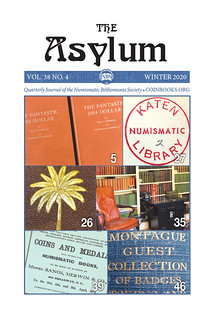 The Asylum's Winter 2020 issue is on its way to NBS members. It's been a strange year but one that has allowed NBS members to make full use of their home libraries and share them with other bibliophiles through The Asylum. Thanks to everyone who contributed this year, and especially to our two-part special issue on the evolution of a numismatic library.
The Asylum's Winter 2020 issue is on its way to NBS members. It's been a strange year but one that has allowed NBS members to make full use of their home libraries and share them with other bibliophiles through The Asylum. Thanks to everyone who contributed this year, and especially to our two-part special issue on the evolution of a numismatic library.
Let's keep those stories coming in 2021! What is the oldest/largest/smallest book in your library? What book or catalogue has interesting associations or special significance? Pick something out of your library and share it with other NBS members. Our next issue deadline is February 1, which should leave ample time explore that fascinating item.
Enjoy the holiday season!
In this issue:
The Rare First Printing of The Fantastic 1804 Dollar: An Explanatory and Comprehensive Census of Surviving Copies
By Leonard Augsburger and Joel J. Orosz
Good Manners for Today's Polite Coin Collector: A Cradle-to-Grave Handbook of Numismatic Etiquette
By Christopher R. McDowell
Remembering Frank Katen
By Charles Sullivan
21 Years After Frost's Encheiridion: The Second American Book on Ancients
By David D. Gladfelter
My Personal Numismatic Library
By Charles Davis
James Ferrier, Jr.: Hardware Merchant, Numismatist and Microscopist
By Ted Banning
A Collection of Trifles
By David Pickup
Message from NBS President, Tom Harrison
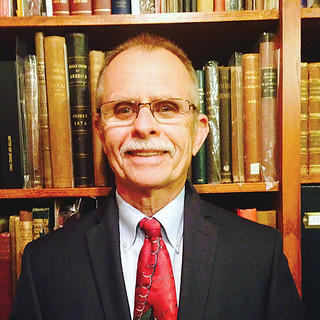 Throughout the long storied history of book collecting, whether for knowledge, pleasurable reading or their accumulation as collectables themselves, special people have preserved treasured volumes for future generations to appreciate. Fortunately, since the first numismatic books were published, the numismatic community has had its share of collectors who have valued the recorded written history of the hobby.
Throughout the long storied history of book collecting, whether for knowledge, pleasurable reading or their accumulation as collectables themselves, special people have preserved treasured volumes for future generations to appreciate. Fortunately, since the first numismatic books were published, the numismatic community has had its share of collectors who have valued the recorded written history of the hobby.
Collecting sequential foundational works about our favorite numismatic items and personalities provides a view of the evolution of the scholarship of a particular branch of the hobby. Annotated auction catalogs transport us back to 19th-century smoke-filled auction houses to identify what specific collectors and dealers were acquiring. While the provenance of very few coins can be positively traced, occasionally numismatic works have been inscribed providing a link to a famous collector or dealer's library.
These works are the conduit that connect us to the pioneers of the hobby and provide an insight into their collecting realm. Undeniably, the technology age has provided incredible benefits to the hobby, however it cannot replace the tranquilly of holding and perusing the pages of our antiquarian friends in our libraries. Thanks to the NBS membership, the tradition of collecting, appreciating and preserving these numismatic time capsules is being carried on for future generations.
May your numismatic library provide investigation, discovery and, most of all, enjoyment.
NBS Membership Renewal Time!
Please renew your membership in the NBS to continue receiving The Asylum in 2021. Go to
coinbooks.org to pay by PayPal or download a membership form today.

NBS WEBSITE, E-SYLUM FORMATS, AND SOCIAL MEDIA
Last week readers were exposed to a work-in-progress - a potentially new format for the emailed E-Sylum, a slimmed-down "thin" version with less content in the email itself and full articles available via a link to our website. While those links were not working Sunday night, they have been available since early Monday morning. I asked some readers for their thoughts and compiled some below.
The "thin" version was initially suggested by the American Numismatic Association for the ANA Edition we were sending weekly to their members. They and their consultants thought their members found the issues too large and unwieldy. The E-Sylum is certainly different than your typical numismatic email. No question, it's huge. We developed the thin version as an experiment. It has all the same articles in the same order, but most articles are shortened to a paragraph or two of text and one or two images, followed by a "Read more here" link. This is the format used by many blog emails.
While the thin issues are certainly smaller (about half the size of a full issue) they're still large because of the ad images and the sheer number of articles each week. We started producing these in parallel with the regular version and have been archiving them since July 19, 2020 on the NBS web site. You can take a look here:
https://www.coinbooks.org/thin/
We've received feedback both in favor of and against the thin version. Some reader comments are shown below. It seems one is either a reader or a skimmer with strong feelings on either side.
THOSE IN FAVOR OF THIN...
Kavan Ratnatunga writes:
"I liked the slim version because I could glance through the whole issue without it being clipped by Gmail, and requiring me to reload it again as clipped"
Dave Hirt writes:
"I like the version with the Read More, because I can read more of the posts that really interest me."
Duane Feisel writes:
"For me, I think having the slimmed down version would work very well. You cover so many facets of numismatics so the issues are quite long to go through in their entirety, but not everyone is interested in the details of every topic. So I think your new approach would be favorably received by everyone.
And, once again, I am amazed with how much you put together each week!"
... AND THOSE AGAINST
Rex Stark writes:
"I much prefer the original format."
Daniel Demeo writes:
"When I go to read an item, I do, but when I am finished, I hit the back button and my browser takes me back, but not to the place I was in The E-Sylum, it takes me back to my e-mail page, with my cursor ready to select the E-Sylum. I click it and then have to find the place where I was, can take a while in the issues with many articles. My work-around is to note how far I am through the issue before I select the item, and scan down to that approximate place to look for my place. I don't know if that is part of the internet, or specific to my browser, Firefox, but it is a pain. Oh well, in the pandemic, what else do I have to do except go through The E-Sylum a second time?"
Greg Burns writes:
"I can appreciate the "lot less bulk" aspect, but honestly, I never had an issue with browsing a bulky E-Sylum (I often found unexpected things of interest along the way as I scanned through it), and wonder if the truncated format will result in my missing something I might have found interesting."
Ken Berger writes:
"I vote No on the slimmed down version. Footnotes may be placed at the bottom of a page or gathered together at the end of a book. I prefer the bottom of the page. While reading, I can easily glance at the bottom of a page & then continue with my reading. Also, I can rapidly see if I should read the entire footnote (I've seen some which have been quite lengthy). None of this is possible when they are at the end of the book. Also, with footnotes at the end of the book, if I turn to them, my reading flow has been broken.
"Giving a summary & having the reader click for the complete article is similar. Some articles in The E-Sylum I read in their entirety, others I just glance over, while others I do not read at all. In many cases, it is impossible to determine which of the three categories the article fits into with just knowing the title (or even a brief summary). Likewise, clicking back & forth breaks up the reading flow. Plus it takes time. Sometimes my internet is quite slow. I don't want to have to keep clicking back & forth."
Paul Hybert writes:
"I usually read each issue from start to finish, but I start only if I have an hour or more available time. The only parts I quickly skim over are catalog numbers, weights, and provenances of pieces -- I understand why you include those items, and agree they should be included for completeness.
"I read full sentences on everything, even in the areas I do not follow, so having to follow a "Read more here" link, and then determining which leading paragraph(s) can be skipped, makes reading the "thin" version more complicated for me.
"I am a creature of habit -- I might adjust to the "thin" format, but the risk is I do not follow a link if the lead-in does not hook me, thereby depriving me of a later morsel or thought.
"When memory, storage, and bandwidth were limited, I appreciated concise emails and such in a simple format. But those resources are much more available now, so I do not see the need you are trying to meet with the "Read more here" links.
"As to the ease of reading: once the email is in my local mailbox, I can read the entire issue without needing to be connected to a network -- an active network connection will be needed to follow the "Read more here" links.
"On the E-Sylum website, will both the long and "thin" versions be available?"
Actually, the thin versions are already available on our website. If there is a large demand for it, we could set up a separate mailing list for those who prefer the thin email format. But meanwhile, we'll keep archiving the thin versions and they'll be available on our website at the same time as the issue published by email. BOTH versions will be available when the email goes out, and you can read the version of your choice with the links at the top of each issue (right after the list of article headlines). They look like this:
Click here to read the thin version on the web
Thanks to all of you for your feedback. I think this is a fair solution. But there is an ulterior motive beyond the traditional email we've been sending every week since September 4, 1998. "Thin" articles with a summary and "Read more here" link are more suitable for posting to social media such as Facebook, Instagram and Twitter. Now that we can reliably create these slimmed-down articles each week, we'll be able at least in theory to post them to NBS social media accounts. Ideally, we would do that automatically so we don't need a poor overworked volunteer to laboriously cut and paste the content into posts. This will increase our reach and find more potential readers where they are.
Email is far from dead - in fact it's as popular as ever and still a great way to build and serve an audience. But to better promote numismatics it can't hurt to have exposure on multiple channels at once. Your thoughts and suggestions will be appreciated. -Editor

NEW BOOK: THE CONFEDERATE TREASURE TRAIN
Becky Rush "Talisman" and Rick Lank "The Coiner" of Hagerstown Maryland have published the first book in their planned series on the numismatics of the U.S. Civil War. Here's the announcement. Thanks! -Editor
begins with
"The Furious Flight of the Confederate Treasure Train
(or Where Did All the Southern Dough Go?)"
 Originally there was going to be just one book – "Money, Mayhem &
Might" – but we wanted to tell a compelling set of stories that would attract
folks who may have only a mild interest in coins and maybe a blush of
curiosity about the Civil War... so we also added deeper dives into alluring
tales of treasure, introduced a few metal detectorists' stories and sought to
become more familiar with some of the people who financed the "sinews of
war." And, of course, we constantly wanted to allude to the fact that the Civil War and its era fundamentally changed U.S. coins, currency and banking.
Originally there was going to be just one book – "Money, Mayhem &
Might" – but we wanted to tell a compelling set of stories that would attract
folks who may have only a mild interest in coins and maybe a blush of
curiosity about the Civil War... so we also added deeper dives into alluring
tales of treasure, introduced a few metal detectorists' stories and sought to
become more familiar with some of the people who financed the "sinews of
war." And, of course, we constantly wanted to allude to the fact that the Civil War and its era fundamentally changed U.S. coins, currency and banking.
With the pandemic tamping down other activities (and many coin shows), we spent more time fleshing out certain tales – and the "Confederate Treasure" story (which originally was going to be one chapter in the original book) was so intriguing that we spun it out of the constraints of the single chapter we planned – and, lo-and-behold, it became a 200-page book in-and-of itself.
The first book is 8 1/2 x 11 inches and as of right now, it is spiral-bound. We think this may make the book easy to read and share with a group or family. It is set in 14 point type, so it is easy-to-read, and it is loaded with photos and illustrations. It is intended to be a "good read" for young-and-older readers alike!
As a numismatist, you will discover many references to coins that were either in general circulation and/or were in bank vaults in the South and which were hauled onto escaping trains from Richmond in April of 1865. You will find obscure references to things such as "silver and gold slugs" purportedly in the Confederate Treasury that were thought to be from "sweepings" from the Dahlonega, GA and Charlotte, NC mints (which were "taken in trust" by the Confederacy in 1861).
We even get into the logistics of moving so much gold coin ("hard specie") around – down to the details of the Confederates making money-belts for members of the Cabinet – fleeing into exile-who would need "some coin" when they "reach foreign soil..." And just how heavy those belts would be – let alone the weight of $450,000 in gold coin and bullion that was thought to be aboard the wagon trains headed towards Washington City, Georgia. (At some point, gold becomes ballast – dead weight that slows down old wagons and carts…)
We also tackle just how intertwined transportation and banking was back in the day – for example, the Central Georgia Railroad and Banking Company (later called simply "The Georgia") was into hauling about munitions, money and giving free rides to discharged southern soldiers when Johnston surrendered and Davis was arrested. Other short-haul railroads played vital roles in this story – and many produced handsome yet utilitarian banknotes/boarding passes/scrip during the War and long afterwards.
The Georgia – based in Augusta, GA – was a powerhouse in the Southeast until just a few decades ago – it ultimately got gobbled up by Wells Fargo and is now gone.
Southern Paper Money becomes Worthless – Gold and Silver Coin is at a Premium – and Bushwhackers go after Richmond Gold
 And then there is the drama of the train (or trains) rolling south while the
Confederacy literally collapses around them – and the $600 million in Confederate paper money and CSA bonds become totally worthless by the time that the "Treasure Train" gets to the "end of the line" in Georgia in early May. By then, the Train is being hounded by Northern Cavalry in hot pursuit AND by Southern discharged soldiers because the gold and silver on board is now valued at a premium. And the Southern ex-soldiers desperately need cash just to get home…
And then there is the drama of the train (or trains) rolling south while the
Confederacy literally collapses around them – and the $600 million in Confederate paper money and CSA bonds become totally worthless by the time that the "Treasure Train" gets to the "end of the line" in Georgia in early May. By then, the Train is being hounded by Northern Cavalry in hot pursuit AND by Southern discharged soldiers because the gold and silver on board is now valued at a premium. And the Southern ex-soldiers desperately need cash just to get home…
And to wrap it all up – following the gold money from Richmond as it made its way first to Georgia and then its being robbed by bushwhackers (and purloined here-and-there) – a sizable portion ended up in the US Treasury in Washington, D.C. A celebrated legal battle over its custody was brought before the Court of War Claims (US House of Representatives) by a Richmond firm called Isaacs & Company, representing three depository banks (for the State of Virginia) – all of which had failed shortly after the War ended.
This legal battle for custody went on for an incredible 27 years after the Petition was first filed in 1866. (Several principal witnesses passed away during that period.) In the end, the federal government kept the majority of the dough (about $80,000 in gold coin) – thus ending what could have been the longest (and last) battle of the US Civil War.
A brew of forensic accounting, riveting accounts of money on the move, shell games to keep the Federals guessing where the money was going, titillating stories of gold coin troves being left behind near the Savannah River – at a town called Vienna, South Carolina, which has been submerged under 30 feet of water since a dam was built downstream in 1954… and much, much more…
We will be sending the book out in the domestic US via flat-rate Priority Mail – the price (for a limited time) will be $50 ($40 for the book and $10 for shipping and handling). Special orders (bulk) and overseas will be negotiated individually.
There are still two more books in the works – and plans for other "sagas" and possibly video treatments in the future.
The softcovered 192-page spiralbound book is the first press run. Future printings may incorporate small editorial changes or be offered in different binding types. Images are in both color and greyscale. There are no footnotes or endnotes, but there are a couple pages listing resources and further reading. -Editor
For more information, or to order, see:
https://treasure-train-saga.us/
https://talisman-coiner-productions.us/

RITA ROSENBLUM (1948-2020)
I'm sorry to report the passing of Rita Rosenblum. Below is a photo of Bill and Rita Rosenblum in much happier times. -Editor
 Rita Rosenblum, 72, of Littleton, CO passed away November 13, 2020.
Rita Rosenblum, 72, of Littleton, CO passed away November 13, 2020.
She was born to the late Esther and Bernard Berkowitz on February 15, 1948, in Bridgeport, Connecticut. The youngest of three children, Rita graduated from Bridgeport Central High School in 1964, and attended Fones School of Dental Hygiene as well as the University of Connecticut when she met a young curly-haired beatnik named Billy from New Jersey.
Rita married Bill Rosenblum in 1967 and soon left the east coast for Northern California, spending time near San Francisco and the Russian River Valley. During a road trip back east, Bill and Rita's van broke down in Denver. It was then the two decided to make the Mile High City home. She lived in Colorado until her death.
Rita is survived by her husband Bill and two children: Brian Rosenblum and his wife Eva of Lawrence, Kansas; and Sarah Gumina and her husband Joe. She is also survived by her brother Bill Berkowitz, and four grandchildren Shimon, Felix, Rosalita and TJ.
Kind and gentle are the first words anyone who knew Rita will use to describe her. It is fitting she died on World Kindness Day.
An exceptional wife and mother, Rita worked a variety of jobs throughout her life. For a better part of 30 years, she worked side-by-side with Bill helping to run his numismatic business. Rita loved to travel, collect kachina dolls and African monies, and, most of all, spend time with her family.
The family would also like to thank the wonderful and kind workers at Johnson Adult Day Center, Friends for Life, Mountain Vista Senior Living, Suncrest/Bristol Hospice and Daphne Jean and Lisa Theard of Oasis Senior Advisors who helped us navigate this long journey.
In lieu of flowers, a Lovely Rita fund has been set up with the Alzheimer's Association. Click here to donate. Checks can be mailed to Alzheimer's Association Colorado Chapter Attn: Denver Walk to End Alzheimer's 455 N Sherman St. Ste. 500 Denver, CO 80203. Please have everyone include a note on the check or in the envelope that the money should be applied to Team Lovely Rita Rosenblum.
A celebration of life will be held at a later date either via Zoom and/or when we can all gather together.
Oh, lovely Rita, meter maid
Where would we be without you
Give us a wink and make us think of you
Bill Rosenblum adds:
"After taking a class from Chuck Opitz at an ANA Summer Seminar in the mid 90s Rita became hooked and she was very proud when he acknowledged her help in his opus Ethnographic Study Of Traditional Money. She and I gave numerous presentations at coin clubs in the Front Range and she even was the featured speaker at one of the Primitive Money Society meetings at an ANA convention."
To donate the Alzheimer's Association in Rita's memory, see:
http://act.alz.org/goto/lovelyritarosenblum

BOWERS & MERENA'S THE COIN COLLECTOR ON NNP
The latest addition to the Newman Numismatic Portal is Bowers & Merena's The Coin Collector. Project Coordinator Len Augsburger provided the following report. -Editor
Bowers & Merena's The Coin Collector on Newman Portal
 The 1990s represented heady times for the numismatic firm of Bowers & Merena, with the Eliasberg and Bass sales leading the way. Bibiliophiles were richly treated as well, with a steady stream of books from Q. David Bowers in addition to the house organs Rare Coin Review and The Coin Collector. Newman Portal has recently digitized The Coin Collector, a 144-issue run published from 1994 to 2003. This tabloid-sized emission was primarily a vehicle for fixed price sales but also included research articles and other features. Few runs seem to have survived, as most collectors discarded copies after checking for items of interest.
The 1990s represented heady times for the numismatic firm of Bowers & Merena, with the Eliasberg and Bass sales leading the way. Bibiliophiles were richly treated as well, with a steady stream of books from Q. David Bowers in addition to the house organs Rare Coin Review and The Coin Collector. Newman Portal has recently digitized The Coin Collector, a 144-issue run published from 1994 to 2003. This tabloid-sized emission was primarily a vehicle for fixed price sales but also included research articles and other features. Few runs seem to have survived, as most collectors discarded copies after checking for items of interest.
Newman Portal acknowledges Joel Orosz for loaning his run for scanning, as well as Jennifer Meers at Stack's Bowers who provided several missing issues. We are also grateful to Collector's Universe, the copyright holder, for making this content available for full-view.
Link to The Coin Collector on Newman Portal:
https://nnp.wustl.edu/library/publisherdetail/539529
VIDEO: SILVER DOLLARS AND THE MS-64 GRADE
These are selections from the David Lisot Video Library that feature news and personalities from the world of coin collecting. David has been attending coin conventions since 1972 and began videotaping in 1985. The Newman Numismatic Portal now lists all David's videos on their website at:
https://nnp.wustl.edu/library/multimediadetail/522852
Here's one on the creation of the MS-64 grade level. -Editor
Why the Coin Grade MS-64 Was Created
VIDEO: 3:31.
John Highfill, Founder, National Silver Dollar Roundtable,
David Lisot, Interviewer, CoinTelevision.com.
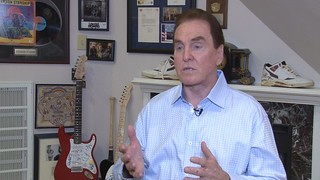 Coin grading was originally a series of adjectives from "fair for the lowest grade to "brilliant uncirculated" for the highest. Later this adjectival grading was replaced with numerical grading based on a 70 scale, from one to seventy. Uncirculated grades are from MS60 to MS70. In the 1980's there was no MS64 grade. Hear the story of how this came about.
Coin grading was originally a series of adjectives from "fair for the lowest grade to "brilliant uncirculated" for the highest. Later this adjectival grading was replaced with numerical grading based on a 70 scale, from one to seventy. Uncirculated grades are from MS60 to MS70. In the 1980's there was no MS64 grade. Hear the story of how this came about.
An excerpt of the video is available for viewing on the Coin Television YouTube Channel at:
https://youtu.be/kQh2FsBFJ4g

NEWMAN PORTAL WEB SEARCH
As mentioned in some earlier issues, I've been gradually compiling a list of numismatic web sites for the Newman Numismatic Portal. Eventually these sites will be incorporated into NNP somehow, and they are already being actively archived using the Internet Archive's Wayback Machine.
 As an interim step I recently created a Google Custom Search Engine using this list of over 625 websites. Think of it as Google laser-focused on just websites about numismatics. All the nonrelevant results go away, leaving just the content created by fellow numismatists.
As an interim step I recently created a Google Custom Search Engine using this list of over 625 websites. Think of it as Google laser-focused on just websites about numismatics. All the nonrelevant results go away, leaving just the content created by fellow numismatists.
Sound useful? Give it a try. You may find higher quality results than you're used to getting from everyday Google / Bing / whatever search engine you use. For example, near the top of a regular Google search for "trime" is the top definition from the Urban Dictionary: trime. same as "try me". bess trime then !!!. Other results include the TriMe Swim Clinic and a video with 59 views for the British lighting tower specialist company TRIME.
By contrast, the top NNP web search results are articles about the U.S. three cent silver coin from CoinWeek, NGC, the Greysheet, Numismatic News and the American Numismatic Association.
Picture this: fourth page of image results from the NNP search:

Fourth page of image results from regular Google:

Which do you prefer? Now of course, regular Google still finds a lot of the same content, it's just that it's mixed with stuff you may not be interested in. Take the new NNP search for a spin with some of your favorite search topics and see what you think.
There is also a way to filter your results further to just websites in certain categories. Today these categories include museums, discussion forums, blogs, organizations, and what we expect will be a popular choice - auctions. Auction sites currently include Heritage, Stack's Bowers, Goldberg's Great Collections, Classical Numismatic Group, Spink, Dix Noonan Webb, Noble Auctions, and more. Enter your search string, then choose the Auction button to filter out everything but auction results.
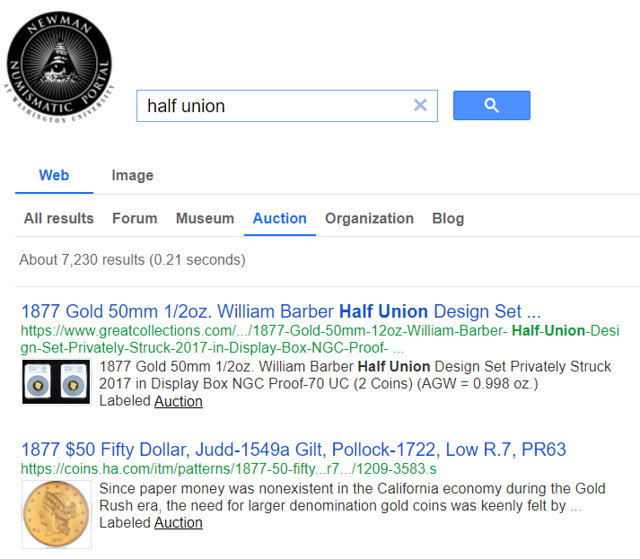
NOTE: if you enter a new search you'll have to click the Auction button again to stay focused on auction results. And we are seeing some unexplained results, such as Coin World articles showing up under Auction results even though that's not one of the sites on the auction list. Undoubtedly, more problems could be discovered. Still, this may become a useful tool for many of you.
Like the Newman Portal itself, while we focus primarily on American numismatics, our scope is not strictly limited. Websites from around the world are included. While we're only attempting to be comprehensive for the U.S., we welcome suggestions of sites worth including, as long as they are primarily numismatic in nature.
This is a work in progress and your feedback is welcome. Please let us know what you think. -Editor
To use the Newman Numismatic Portal Custom Search Engine, see:
https://cse.google.com/cse?cx=f9732fe5f63956a30

JEWELL, HAMELBERG AND THE SPECIAL ADAMS-WOODIN
E-Sylum readers know Dan Hamelberg as an NBS Board Member, donor, U.S. coin collector and numismatic bibliophile - he's built what is likely the largest and best private library on American numismatics. Rich Jewell edits The Clarion for the Pennsylvania Association of Numismatists and is quite a collector himself, including three dollar gold pieces, U.S. commemoratives, patterns, tokens, medals and medallic artwork such as plasters and galvanos. Rich is also a buyer of numismatic literature and shares this story of how he first encountered Dan in the marketplace. -Editor
 November 8th's E-Sylum article on Edgar Holmes Adams by John Lupia brought to mind my own experience with the Adams-Woodin book "United States Pattern, Trial and Experimental Pieces." Back in 2005 Heritage Auctions had the book in one of its auctions, I believe it was their Palm Beach Signature Sale, Session #7. I bid on the book and won it.
November 8th's E-Sylum article on Edgar Holmes Adams by John Lupia brought to mind my own experience with the Adams-Woodin book "United States Pattern, Trial and Experimental Pieces." Back in 2005 Heritage Auctions had the book in one of its auctions, I believe it was their Palm Beach Signature Sale, Session #7. I bid on the book and won it.
Shortly thereafter I was called by Greg Rohan, President of Heritage and asked if I'd give up the book. I asked why, and he stated there had been "a computer glitch" and another regular customer of theirs had bid higher but the computer had overlooked his bid. Being relatively new to auction bidding at the time I simply said I won the bid and I wanted the book (I had just started collecting patterns and thought this would be a great find for my growing library). Greg then asked if it was alright if he gave my name and phone number to the other bidder. I said fine but I wasn't going to change my mind.
 Well later in the day I received a phone call from a fellow by the name of Dan Hamelberg (and being new to book collecting I really had no idea who he was) and after introductions he asked me how many books I had in my library. Not trying to be a smart-Alec I think I told him "one!" We carried on the conversation for a few more minutes before I told him I wasn't ready to sell the book at this time. He informed me he had another copy of the book but this one was in much better condition and he thought it would go great in his library. We ended the call with pleasantries and that was over fifteen years ago.
Well later in the day I received a phone call from a fellow by the name of Dan Hamelberg (and being new to book collecting I really had no idea who he was) and after introductions he asked me how many books I had in my library. Not trying to be a smart-Alec I think I told him "one!" We carried on the conversation for a few more minutes before I told him I wasn't ready to sell the book at this time. He informed me he had another copy of the book but this one was in much better condition and he thought it would go great in his library. We ended the call with pleasantries and that was over fifteen years ago.
Interestingly, our late friend American numismatic bibliophile Armand Champa had also been a collector of U.S. pattern coinage before discovering the joys of numismatic literature. Rich kindly shared photos of his prize, Elliott Smith's leatherbound special edition, #5 of 50. Thanks. This variant is missing in my own library. From the catalog description: "According to Pete Smith's American Numismatic Biographies, Elliott Smith was ANA Life Member number 1, a council member of the ANS, and a founding member of the New York Numismatic Club." -Editor
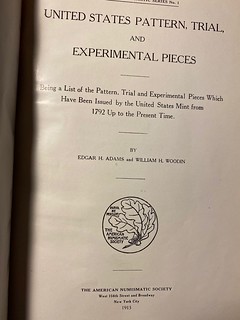

Dan adds:
"I remember the book. In addition to the edition in question, I have an interleaved blue cover first edition copy signed by the authors. I also have Woodin's special first edition copy #1 in brown leather and gilt with other notes and photos tipped in, and William Guild's annotated copy as well. Along the way I have collected various editions in various formats along with a few autographed editions. Makes for a great story!"
To read the earlier E-Sylum article, see:
EDGAR HOLMES ADAMS (1868-1940)
(https://www.coinbooks.org/v23/esylum_v23n45a16.html)
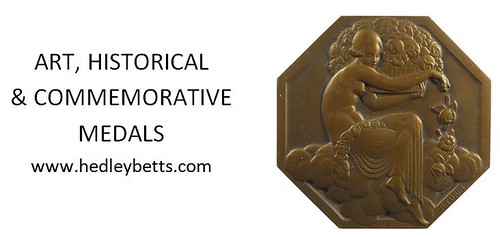
ON DIGITIZING THE NATIONAL NUMISMATIC COLLECTION
Max Hensley submitted these observations on the digitization projects at the National Numismatic Collection at the Smithsonian's National Museum of American History. Thanks. -Editor
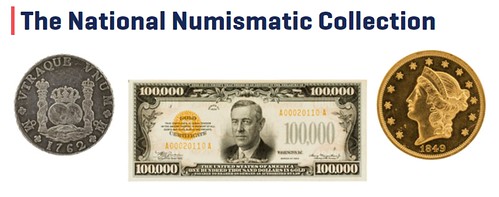
I was really excited to explore the Smithsonian coin holdings digitally. It is evidently too expensive for them to display this material, and ever since the Lilly Collection got shuffled off in favor of some evidently more sexy artifacts, we numismatists have been at the far end of the line.
I wanted to look at the French coins in the Paul A Straub Collection. A filtered search under "France" returned 356 items. While I suppose we ought to be grateful for whatever we get, all in all I have to give the part I reviewed a D. However I did not look at any other collections, where the cataloging may be better (or worse).
The first and largest problem was the lack of reverse images. French mint marks are on the reverse, and the text descriptions are too skeletal to supply the information, such as "2 Francs date made 1804 [plus a museum ID no]." On only three images did little arrows appear in the margin where you could click to show the reverse, and as far as I can tell this option appeared randomly. The FAQ were only generally applicable to artifacts in general. There was nothing on how to get to the reverses consistently.
The date "1804" shows an unfortunate lack of numismatic background. At this time French coins were dated from the founding of the Republic on September 22, 1792, so "1804" could be either L'An 12 or L'An 13 because the Republican Calendar does not overlap the Gregorian one. (Don't you love revolutions?)
Imaging seems to have been an on-going project or employed more than one contractor. Backgrounds were white or black, and some (helpfully) had a color chart and 2 cm scale. Image quality also varied, although in general it was modest at best. Professional coin photographers probably would have something more coherent to say, but to me images suffered from incident light from below that was too strong, thus resulting in areas of glare and obscurity. Of course, it is on the web, so resolution is bad. You can enlarge the image but this only produces what appears to be a larger image of poor resolution. There is no option to link to a high def counterpart.
Sadly missing was any provenance on the coins. I suppose it is possible the donor didn't supply it, but for ancients in particular it would be extremely helpful. Judging from what I saw in my French sample I doubt that information of that sort would have been entered into the catalog anyway.
The Institution seems to recognize it is not creating a work of art here, specifically characterizing it as a "work in progress." They solicit feedback, but the comments box I tried but it did not accept any text.
Paul Straub was one of the largest contributors to the Smithsonian numismatic collection, but much of the material falls into the category of "study collection". MS-65's and proofs were not evident, and are mixed in with a great deal of VF-EF coins. Of course, Straub had been adding things up to his death in 1958, so this is certainly to be expected. Grade collecting was hardly a gleam in a collector's eye at that time.
The entries also specify if the item can be seen on display. I found no evidence that any of Straub's material is on display, and I suspect getting in to see it in person would be quite difficult due to staffing and security issues; the FAQ did not address this, referring questions to curatorial staff. It is painfully obvious that donated coins will be not be put on display under the current circumstances. While the digital project is a wonderful first step, I certainly agree it is a "work in progress".
Thanks for the tip!
National Numismatic Collection Curator Dr. Ellen Feingold provided this response. Thank you. -Editor
Dear Mr. Hensley,
Thank you very much for sharing this feedback. It is always helpful for us to hear from digital visitors and we take your feedback seriously. You are absolutely correct that our catalog records are works in progress. The NNC has a very small staff team and most of our team members are funded by the generosity of the Friends of the NNC and short-term grants. Given the large size of the collection and small number of records online, we have prioritized sharing online as much of the collection as possible through mass digitization projects (such as with the Paul Straub collection).
In those mass digitization projects, our short-term staff members (who are not trained numismatists) are only able to record the existing information about the object as documented on the object's box by the original collector or former NNC staff member, rather than do research on each individual object. Unfortunately, that means that some of our catalog records contain errors and outdated descriptions. We share your concern about this. We warmly welcome feedback on our records and are enthusiastic about correcting any errors that we are made aware of. If the comment box on the object record is not working, we are happy to accept feedback via email at: NMAH-NNC@si.edu.
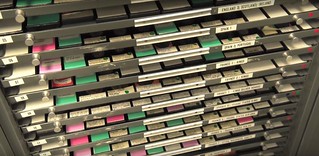 While we agree that this is not an ideal cataloging system, we believe that making these records available online is still important progress toward making the NNC a public resource. Prior to the COVID-19 pandemic, we regularly welcomed in person research visitors and, when we are permitted to restart research visits, we encourage researchers to make appointments to consult the collection in the Howard F. Bowker Research Room. To make an appointment, please send an email to:
NMAH-NNC@si.edu.
While we agree that this is not an ideal cataloging system, we believe that making these records available online is still important progress toward making the NNC a public resource. Prior to the COVID-19 pandemic, we regularly welcomed in person research visitors and, when we are permitted to restart research visits, we encourage researchers to make appointments to consult the collection in the Howard F. Bowker Research Room. To make an appointment, please send an email to:
NMAH-NNC@si.edu.
With regard to the Straub collection, all Straub objects have both obverse and reverse images available. When you select an object record, click on the small arrows in the lower left hand side of the image box to change the image from obverse to reverse or vice versa. If you have found individual records where images are missing, please email us at NMAH-NNC@si.edu and we will explore why those images are not appearing online as they should be. Please be assured that both images have been taken and if they are not showing up it is due to a glitch in the museum's database. We absolutely agree that both images are necessary and should be made available to the public.
 A small number of Straub's coins are on display in our gallery, The Value of Money, but the majority of the Straub collection is not on display. Given the enormous scale of the NNC and many treasures it holds, only a small portion of the NNC is on public display at any given time. We believe that this makes our digitization efforts even more urgent and essential. Thank you for taking the time to give us feedback and please don't hesitate to reach out with any further questions or concerns.
A small number of Straub's coins are on display in our gallery, The Value of Money, but the majority of the Straub collection is not on display. Given the enormous scale of the NNC and many treasures it holds, only a small portion of the NNC is on public display at any given time. We believe that this makes our digitization efforts even more urgent and essential. Thank you for taking the time to give us feedback and please don't hesitate to reach out with any further questions or concerns.
Kindest Regards,
Ellen
Dr. Ellen Feingold
Curator, National Numismatic Collection
National Museum of American History
To read the earlier E-Sylum article, see:
DIGITIZING THE NATIONAL NUMISMATIC COLLECTION
(https://www.coinbooks.org/v23/esylum_v23n45a10.html)
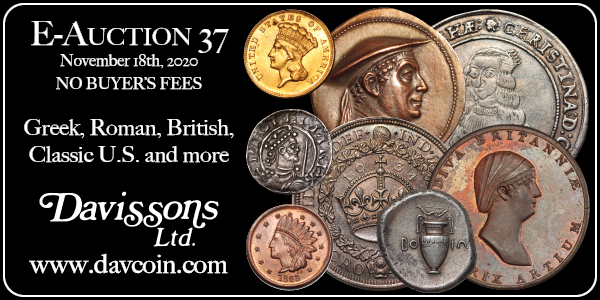
MORE ON PANDAAMERICA FOUNDER MARTIN WEISS
NGC published an article on November 5, 2020 about the late Marty Weiss. -Editor

The numismatic innovator changed the world of coins by popularizing Pandas.
Numismatic Guaranty Corporation® (NGC®) notes with sorrow the passing of Martin Weiss, a groundbreaking coin dealer who popularized China's fledgling Panda coins in the 1980s and later inspired the creation of other popular series.
Weiss was one of the first numismatists to recognize the vast potential of China's Panda series, which was introduced in 1982, only a few years after China started issuing collector coins. Weiss founded Panda America with a single employee and quickly built the company into a world leader for Pandas by using innovative advertising and distribution methods.
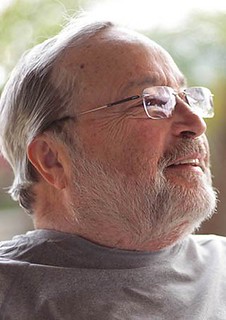 It was Weiss who suggested that China vary the design of its Panda coins yearly, which has created a seemingly endless variety of interesting ways to showcase the beloved endangered animal. Today, the annual unveiling of the next Panda design is highly anticipated by numismatists.
It was Weiss who suggested that China vary the design of its Panda coins yearly, which has created a seemingly endless variety of interesting ways to showcase the beloved endangered animal. Today, the annual unveiling of the next Panda design is highly anticipated by numismatists.
The China Mint appreciated Weiss' keen understanding of the preferences of the marketplace. When Weiss pushed for series celebrating the Inventions and Discoveries of China as well as Unicorns, the China Mint brought them into existence in 1992 and 1994, respectively.
In 2016, China struck trimetallic medals in Weiss' honor, featuring his bespectacled bearded face surrounded by the words "China Panda Coin Ambassador - Martin Weiss." The other side of the medal includes the inaugural design of a panda grasping a bamboo branch from 1982.
With the creation of distinguished designs that attract strong demand, both domestically and worldwide, China has established itself as a respected leader in minting collector coins. Reflecting on how this innovative spirit was forged during a downturn in the metals markets in the 1990s, Weiss once noted: "How you survive a dull market is by being creative, by coming out with interesting products. That was the secret of the China Mint. Instead of two or three big mintages, they had over a hundred different products in the mid-'90s."
Weiss also was a pioneer in championing the importance of third-party grading. NGC, which was founded in 1987, now has offices in Shanghai and Hong Kong, China, to serve the robust collector coin markets that have grown in the world's most-populous country.
"Marty Weiss rewrote the history of numismatics by showing the world the potential of modern Chinese coins," said NGC Chairman and Grading Finalizer Mark Salzberg. "Sadly, the numismatic world has lost one of its greatest innovators."
To read the complete article, see:
In Memoriam: Martin Weiss, 1938-2020
(https://www.ngccoin.com/news/article/8675/martin-weiss-in-memoriam/)
To read the earlier E-Sylum article, see:
VIDEO: PANDAAMERICA FOUNDER MARTIN WEISS
(https://www.coinbooks.org/v23/esylum_v23n45a09.html)

NOTES FROM E-SYLUM READERS: NOVEMBER 15, 2020
On William Webb's Currencies of Rajputana
Scott Semans writes:
 "The William Webb book was published in 1893 and reprinted since. This is likely an unchanged reprint."
"The William Webb book was published in 1893 and reprinted since. This is likely an unchanged reprint."
Thanks. We hadn't mentioned it in The E-Sylum before, and it was presented as a new book. Sorry! -Editor
To read the earlier E-Sylum article, see:
NEW BOOK: CURRENCIES OF RAJPUTANA
(https://www.coinbooks.org/v23/esylum_v23n45a05.html)
The Good Old Days
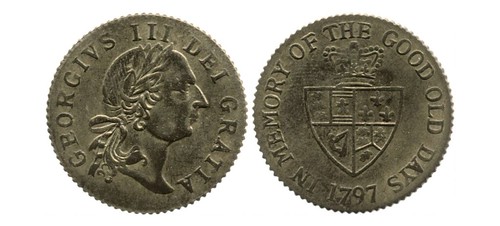
An example of Dave's token from the British Museum
Dave Hirt writes:
"In the October Numismatist magazine there was an article that helped me to identify a token in my collection. It was an article on gambling tokens. I learned that my token which is dated 1797, is from a London gambling house.
The inscription on the reverse had always been intriguing to me. It read IN MEMORY OF THE GOOD OLD DAYS. I had no idea that saying went back that far. So, when really were the good old days? I guess that each generation would have its own opinion of that. Probably the times remembered as the happiest in our lives."
The article by Tom Lopez is titled "Gambling Tokens: A Brief History". -Editor
Dave adds:
"Thinking about some very good times in my life - one numismatic memory is the Charles Davis book sale at the ANA midwinter show in Cleveland in 1997. The bidders at that sale were a who's who of numismatic literature collectors. (Sadly, some are no longer with us). There were rarities galore in that sale. Wayne, you and John Burns were seated just behind me. Phil Carrigan, who I roomed with at the show sat next to me. When I was the winning bidder on the large Maris book on New Jersey cents, you and John broke into applause for me. Later I was lucky to be successful on a Haseltine type table catalog, inscribed, "presented to Numismatic and Antiquarian Soc. of Philadelphia by John W. Haseltine." A famous sale, by a famous dealer, to an historic society. These are memories that I associate with The Good Old Days.
"Looking through my named auction room copy of the Cleveland sale, I saw that you made some good buys, The Bronson on Connecticut money, and Browning on US quarters."
Good times, indeed! -Editor
In a similar vein, over on the Colonial Numismatics email group Ray Williams writes (regarding the Stack's-Bowers E PLURIBUS UNUM auction):
"Were any of you there bidding in person? I miss the old Americana Sales, typically in January. It was like a mini C4 Convention with 40-50 of us bidding in person. I miss the camaraderie of those days. We knew who we were bidding against (usually), who collected what... we were all in friendly competition. Now we just interact with a face on the screen. I guess that's the price we pay for having wonderful technology. "
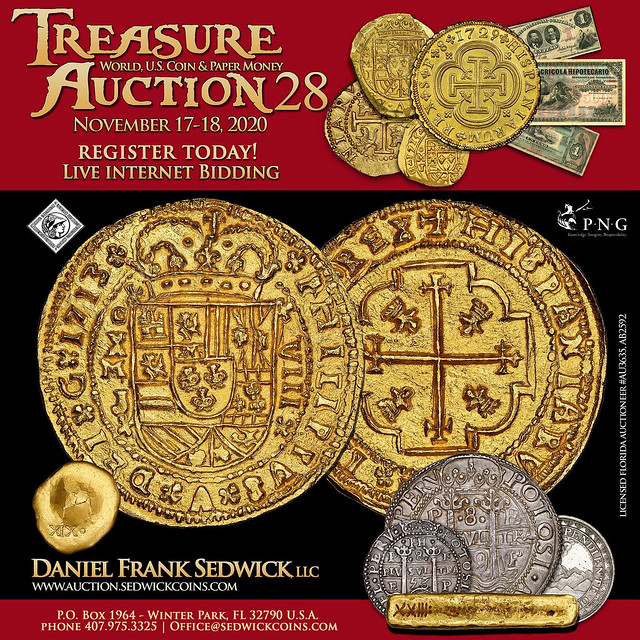
MORE ON THE MARYLAND JESUIT PLANTATION
Vic Mason of Mamaroneck, NY submitted these thoughts on last week's item about discoveries in Maryland. -Editor
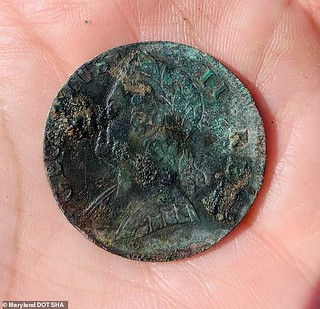 Thanks for reporting the 3 November 2020 Daily Mail [from England] article about the important
archeological discovery of the remnants of the 300-year-old underground slave quarters in Maryland,
dating from a time when "the Catholic Church did not view slave holdings as immoral." Like most coin
collectors, I was initially attracted to the story by my curiosity as to the "coins" referred to in the
headline of the article: "Slave quarters dating to the 18th century are unearthed at Jesuit plantation in
Maryland revealing remains of cabins, tobacco pipes, coins and other personal belongings."
Thanks for reporting the 3 November 2020 Daily Mail [from England] article about the important
archeological discovery of the remnants of the 300-year-old underground slave quarters in Maryland,
dating from a time when "the Catholic Church did not view slave holdings as immoral." Like most coin
collectors, I was initially attracted to the story by my curiosity as to the "coins" referred to in the
headline of the article: "Slave quarters dating to the 18th century are unearthed at Jesuit plantation in
Maryland revealing remains of cabins, tobacco pipes, coins and other personal belongings."
There was actually only one coin mentioned in the Daily Mail article, and the photo of it makes identification of its origins impossible for the average reader. Perhaps an expert reading this article or taking part in the dig can inform us what the coin is. All the artifacts recovered are described as belongings of the 272 slaves who lived there before being sold down the river in 1838 to a buyer in Louisiana.
That sale apparently caused considerable consternation among some in the Jesuit community, both in Maryland and in Rome, because the priests "feared that the new owners would not allow the slaves to practice their faith." In fact, the leader of the Jesuits in the Vatican, one Reverend Jan Roothan, is quoted as writing: "It would be better to suffer financial disaster than suffer the loss of our souls with the sale of the slaves." That was an important consideration when everyone knew how a sale of slaves from the Northern or border states to the harsh conditions of the cotton-raising deep South, especially for field workers, usually resulted in much shorter life spans than elsewhere – not to mention the nearly inevitable break-up of slave families.
I especially appreciated reading this article since writers on numismatic topics like to remind us that owning an old coin amounts to "holding a piece of history in our hands." Few note, however, that most important financial transactions before the Civil War necessarily had to have dimensions involving the use of slaves in construction, agriculture, trade, commerce, and other daily economic activity.
Furthermore, the gold coins that began to be minted in 1838 in Charlotte, North Carolina, and Dahlonega, Georgia, came from mines on lands from which the peaceable Southeastern tribes of Native Americans -- such as the educated, Christianized Cherokees – were expelled, as we know from the stories about the "Trail of Tears" to Oklahoma. And history tells us that many of those Indians were also eventually enslaved to do the tough work of mining and agriculture.
Joseph J. Ellis, author of the 2001 Pulitzer Prize-winning book Founding Brothers, notes that at the time the United States was founded, at least two-thirds of the value of all property in the 13 colonies came from the value of the slaves themselves – not the land. Thus, America's "capitalist democracy" was mainly based on enslaved human capital. The logical contradiction of demanding freedom from King George III in 1776, while denying it to millions of African slaves, finally produced, 85 years later, the most terrible internal conflict this country has ever faced.
Scott Sery writes:
"I was stunned to learn in that article that money from the 1830 sale of 272 slaves (to the tune of 3.3 million in today's dollars) went to pay debt at Georgetown University. There is no way this cannot sound political but seems to me that if reparations were to be paid, we need look no further than the very institutions demanding it...... Georgetown University for one."
Actually, Georgetown has begun making reparations to descendants of the slaves. Here are articles from The Atlantic and the New York Times. -Editor
When sordid revelations surfaced in recent years of how the sale of hundreds of enslaved laborers in 1838 saved Georgetown University from the cliff of financial ruin, the college cobbled together a multipronged response. It summoned a working group to study how to make penance for the wrongdoing. It held a ceremony to deliver an official apology. It began giving descendants of the 272 enslaved people a bump in admissions.
Last week, in a student referendum, undergrads voted overwhelmingly to tax themselves the symbolically significant amount of $27.20 per semester to create a fund that will support the descendants of the enslaved people from whom the university profited. Many of them live in rural Maringouin, Louisiana, where the median household income is less than $24,000, far below the national average.
To read the complete article, see:
The First Reparations Attempt at an American College Comes From Its Students
(https://www.theatlantic.com/education/archive/2019/04/why-are-georgetown-students-paying-reparations/587443/)
Joining a wave of American institutions moving to offer a measure of restitution for their ties to slavery, Georgetown University announced on Tuesday that it would raise about $400,000 a year to benefit the descendants of the 272 enslaved people who were sold to help keep the college afloat nearly two centuries ago, officials said.
Georgetown officials described the decision as one step in a dialogue with the descendants, who are seeking $1 billion for a foundation that would finance educational, health, housing and other needs. Dr. DeGioia said the university would continue to participate in those talks along with the Jesuits, who established and ran Georgetown and organized a slave sale in 1838 to help save the college from foundering.
To read the complete article, see:
Is Georgetown's $400,000-a-Year Plan to Aid Slave Descendants Enough?
(https://www.nytimes.com/2019/10/30/us/georgetown-slavery-reparations.html)
To read the earlier E-Sylum article, see:
COINS FOUND AT MARYLAND PLANTATION
(https://www.coinbooks.org/v23/esylum_v23n45a23.html)
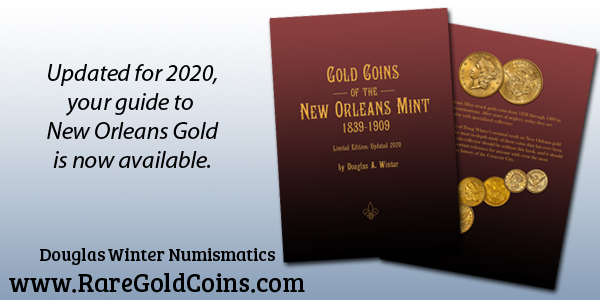
CARL WOLF REMEMBERS CLYDE HUBBARD
Carl Wolf of the Chicago Coin Club penned this remembrance of Clyde Hubbard. Thanks. -Editor
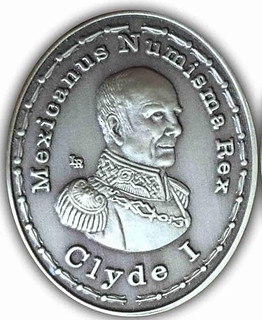 With regret we report that Clyde Hubbard passed away at 104 years of age. The information that follows comes from my notes during personal interviews with him in 1987 and 2005.
With regret we report that Clyde Hubbard passed away at 104 years of age. The information that follows comes from my notes during personal interviews with him in 1987 and 2005.
Clyde was not a member of the Chicago Coin Club, but delivered the featured program at the CCC meeting held at the 2005 Chicago International Coin Fair. He was cited as "the maximum authority" on Mexican coinage and spoke on "The First Coinage of the Americas, Mexico City 1536." A number of club members brought Spanish-American coins from their personal collections and sought his opinion on identification and authenticity. Some even asked for his autograph.
He was a graduate of Princeton University, and during World War II served as a bombardier officer in the U.S. Air Corps. Clyde resided in Mexico for over 70-years but maintained his U.S. citizenship. He was originally sent to Mexico by the Elizabeth Arden firm and remained in the beauty products field until his retirement in 1972.
Clyde's deep interest in the coinage of Mexico led him to become a founding member of Sociedad Numismatica De Mexico A.C. (The Numismatic Society of Mexico) in 1952. He contributed many articles published in their journal and served in various leadership positions, including Bourse Chairman for their first five international conventions in Mexico City. He authored the definitive study of 1824 eight-reale coins (1967), classified 15,000+ pieces from the national numismatic collection at the Bank of Mexico, co-authored many editions of "A Guide Book of Mexican Coins," taught a numismatic class to Mexico Mint employees and contributed to more than two dozen numismatic books.
He was a Fellow of the American Numismatic Society, an inductee into the American Numismatic Association's Hall of Fame, recipient of their 1976 Medal of Merit and their highest honor, the 1983 Farran Zerbe Award. Krause Publication's honored him with a 1984 Numismatic Ambassadorship. He held membership in the Azteca Numismatic Society, the Maximilian Numismatic & Historical Society and other Latin American numismatic societies.
Clyde always wore a coat-and-tie and will be remembered as a complete gentleman, for his readiness to share his extensive knowledge, and willingness to give in-depth education programs. He leaves a solid legacy and his name and published works will appear in footnotes and bibliographies for hundreds of years.
To read the earlier E-Sylum article, see:
WARNER CLYDE HUBBARD (1916-2020)
(https://www.coinbooks.org/v23/esylum_v23n45a06.html)
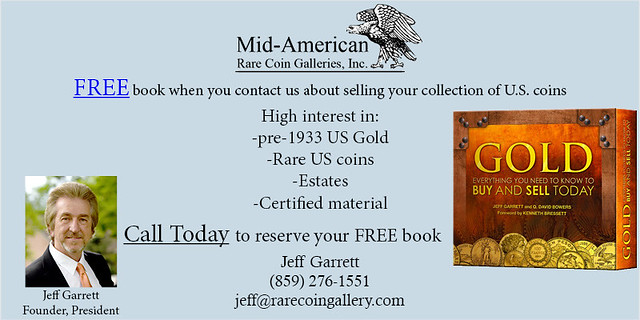
VOCABULARY TERM: PLAQUETTE
I came across this entry from Dick Johnson's Encyclopedia of Coin and Medal Terminology. Although we've published it before (April, 2017), it's worth revisiting. -Editor
 Plaquette.
An art relief smaller than eight inches (or more precisely, 20 centimeters), which bears a bas-relief design. While plaquettes are usually considered square, rectangular, or nearly so, they appear in a variety of shapes, and can be somewhat more creative with silhouetted, open work, sunken relief, or other sculptural techniques. Plaquettes do not share the restrictions of a round medallic item. In effect, plaquettes are the most artistic – and because they can be easily mounted – the most utilitarian form of medallic art.
Plaquette.
An art relief smaller than eight inches (or more precisely, 20 centimeters), which bears a bas-relief design. While plaquettes are usually considered square, rectangular, or nearly so, they appear in a variety of shapes, and can be somewhat more creative with silhouetted, open work, sunken relief, or other sculptural techniques. Plaquettes do not share the restrictions of a round medallic item. In effect, plaquettes are the most artistic – and because they can be easily mounted – the most utilitarian form of medallic art.
Unlike plaques, which are always uniface and larger than eight inches, plaquettes occasionally have a reverse design, particularly those that are diestruck since they are struck with two dies. Otherwise plaquettes have been made by every method that can reproduce a bas-relief design: many forms of casting, electroforming, repoussé, niello, and forging.
But the casting technique, most often used in making early plaquettes, is in continuous use to the present. By making a negative wax impression from a model, pattern, or even an existing plaquette, it could then be cast in the positive. This would usually be cast in bronze. Infrequently, however, plaquettes were made in silver or lead – and much later – in iron, white metals, aluminum, and in the Orient, in pot metal.
After casting, the items were often chased, casting imperfections removed and detail sharpened, termed cast and chased. Most relief items were given a patina, or, infrequently they were gilded or silverplated. The makers were the same artists that made medals, undoubtedly because of their experience working in bas-relief and casting in bronze. For collectors and curators it is necessary to determine the state of the casting, whether a plaquette is a contemporary cast, or a second or subsequent generation. Like cast Renaissance medals, a plaquette must be accurately measured to determine this state (see shrinkage).
In modern times the relationship between plaquette and plaque is more than incidental. Plaquettes have, in fact, been reduced from the same model used for a plaque. A dieshell is made from the model or pattern which is then pantographically reduced to cut the plaquette die; meanwhile that exact same pattern can then be used to make the plaque the exact size by bronze casting. Often the plaquettes are distributed at the time of the dedication of the plaque after it has been installed.
Mounting plaquettes. Uniface plaquettes were sometimes intended to be mounted on another surface. Because of their size they could be mounted on furniture, desk boxes, book covers, bases of small statues, other objects where an intimate decoration was required. Or, if not intended to be mounted on a flat surface, plaquettes would be provided with a support on the back to be able to stand upright on a table, mantel, altar or shelf. The pax of the Catholic Church, intended to stand upon the altar, is an example of a plaquette with such a support.
The back of a plaquette was usually left untreated, particularly if intended to be mounted. But just as often it was finished, or a backplate was attached.
History of plaquettes. Early plaquettes were reproduced and this art form spread from their birthplace in Italy – exactly like Renaissance medals – across the Alps to Germany, France, the Low countries and the rest of Europe. Plaquettes may have, indeed, predated the art medal. Some cast pieces in the 12th and 13th century in square or rectangular shape could meet the above definition and be considered plaquettes (particularly those mounted on the bases of statues).
When Pisanello created an entirely new art form in 1439 by casting the first art medal in lost wax, he also set the stage for the development of the plaquette as a separate object made by the same technique. Thus the plaquette closely paralleled the development of the art medal. Certainly the artistic treatment and strongly religious themes were similar for both classes of art objects.
References:
NC5 {1951} National Gallery of Art (Kress collection).
O11 {1944} Middeldorf.
O12 {1959} Salton.
Looking for the meaning of a numismatic word, or the description of a term? Try the Newman Numismatic Portal's Numismatic Dictionary at: https://nnp.wustl.edu/library/dictionary
Or if you would like a printed copy of the complete Encyclopedia, it is available. There are 1,854 terms, on 678 pages, in The Encyclopedia of Coin and Medal Technology. Even running two a week would require more than 19 years to publish them all. If you would like an advance draft of this vital reference work it may be obtained from the author for your check of $50 sent postpaid. Dick Johnson, 139 Thompson Drive, Torrington, CT 06790.
EDWARD DEAN ADAMS (1846-1931)
John Lupia submitted the following information from the online draft of his book of numismatic biographies for this week's installment of his series. Thanks! As always, this is an excerpt with the full article and bibliography available online. This week's subject is another Adams - Edward Dean Adams, a New York banker active in the American Numismatic Society. I added a photo found on Wikipedia. -Editor
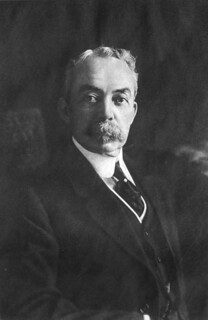 Adams, Edward Dean (1846-1931), Banker and Power Broker, 71 Broadway, New York, New York.
Adams, Edward Dean (1846-1931), Banker and Power Broker, 71 Broadway, New York, New York.
He was born at Boston, Massachusetts, on April 9, 1846, son of Adoniram Judson and Harriet Lincoln (Norton) Adams.
He was educated at the Chauncy Hall School, Boston, and Norwich University, Northfield, Vermont.
In 1872 he married Fannie Amelia Gutterson at Boston. They had a daughter Ruth.
After two years of foreign travel he began his career in banking and became a partner in the firm of Richardson, Hill & Co., Boston from 1870 to 1878; the Winslow, Lanier & Co., bankers in New York City from 1878 to 1893; then as the American representative for Deutsche Bank.
American banker in New York and industrialist. Council Member of the American Numismatic Society. Adams was a New York banker and associate of J.P. Morgan. He had wide cultural interests, which included numismatics. He was on the board of the Metropolitan Art Museum and was active in the American Numismatic Society where he was on many committees involved in publishing the Society's medals. He played an important role in the coining of the various medals struck in honor of the American sojourn of Henry, Prince of Prussia, in 1902. He was well acquainted with Marschall's work; the artist having executed the Sir Francis Drake medal in 1907 for the ANS. Adams was later to privately commission Marschall to do his 1925 Truth Seeker medallion as well as a pair of medals honoring the women presidents of The American Committee for the Ravaged Regions of France He was a Fellow of the ANS in 1901. He was a patron of the ANS in 1906.
He was an active life member of the ANS since January 21, 1901.
To read the complete article, see:
ADAMS, EDWARD DEAN
(http://www.numismaticmall.com/numismaticmall-com/adams-edward-dean)
To read the Wikipedia entry, see:
Edward Dean Adams
(https://en.wikipedia.org/wiki/Edward_Dean_Adams)

2021 FUN CONVENTION EDUCATIONAL PROGRAMS
The Florida United Numismatists are proceeding with plans for the January 2021 FUN show. Here are the planned educational programs, announced November 6, 2020. -Editor

Thursday, January 7, 2021
11:30AM-12:30PM "Lincoln Cents 1909-1949," by Mark Trout. Why is the Lincoln Cent series so incredibly popular? Mr. Trout, a FUN Board member and an experienced collector, will delve into exactly WHAT makes this series so special with both collectors and dealers. His presentation, which focuses on the 1909-1949 period, is a bonanza for the Lincoln cent enthusiast!
12:30-1:30 PM "My Top 10 Most Underrated/Undervalued Barber Coins of All Time," by John Frost. Mr. Frost, a recognized expert on Barber coinage, is president of the Barber Coin Collectors Society. Today he will reveal his list of his top 10 favorite issues among all of the Barber coin series. A few of these dates will surprise you!
1:30-2:30 PM "Surviving Our Hobby's Latest Threat. How to Protect Yourself from Counterfeit Slabs," by Tom Walker. Counterfeit slabs continue to plague our hobby, but there are some things dealers and collectors CAN DO to protect themselves. What are the diagnostics? What steps can be taken to spot these fake slabs? Mr. Walker has the answers in this vitally important presentation.
2:30-3:30 PM "My Top 10 U.S. Gold Coin Recommendations for 2021," by Robert McDonald. The first words out of Florida dealer Robert McDonald's mouth will be "I told you so!" Indeed, he did. In 2019 his presentation centered on undervalued dates in the $10 Liberty series. In January 2020 he made specific date selections on $20 gold pieces. The results were spectacular! This year Mr. McDonald will examine the broad spectrum of all U.S. gold coins to make his top 10 picks for 2021. He believes all 10 of them have a chance to be winners!
Friday, January 8, 2021
11:30AM-12:30PM "My Top 10 Numismatic Predictions for 2021," by David Harper. The year 2020 was a year few of us will forget. Will 2021 bring more upward gyrations in the precious metals? Will silver dollars and gold coins soar through the roof? Or will they come crashing down? David Harper, the former editor of Numismatic News, has the answers to these and other related issues as he makes his annual forecast for the coming year in coins. This blend of information spiced with humor has become a FUN tradition. Don't miss it!
12:30-1:45 PM "43rd Annual Silver Dollar Investors' Forum: Collecting Goals for Underrated Seated, Trade, Morgan, and Peace Dollars," by Randy Campbell, NLG. Mr. Campbell is a former president of both FUN and the National Silver Dollar Roundtable. He's also the senior grader for ICG Grading Service in Tampa. Today Mr. Campbell will suggest specific collecting goals for those putting together sets of underrated dates in these four different types of silver dollars. His factloaded presentation is full of reasonable collecting goals for buyers of all income levels.
1:45-2:45 PM "How to Fail Miserably and Still Succeed as a Collector and Dealer," by Steve Howard. Mr. Howard, a retired U.S. Air Force colonel, has spent several decades as both a serious collector and a part-time dealer. His experiences have ranged from terrible to truly outstanding! He will tell those in the audience how to avoid the bad and enjoy the good experiences of the coin collecting hobby we all love!
2:45-3:45 PM "My Top 12 VAMs for 2021," by John Roberts. Mr. Roberts is the Director of Attributions for ANACS Grading Service. He also authors a monthly column for Coin World. What are his 12 favorite VAMs for 2021? Find out in this highly informative program.
3:45 PM "Annual VAM Thing," by The Society of Silver Dollar Collectors. For over a decade this meeting of silver dollar variety collectors has been held at the January FUN convention. Collectors will be amazed at the volume of information available at this program. All are welcome to attend!
Saturday, January 9, 2021
12:15-1:15 PM "An Overview of Liberty Seated Coinage: Recommendations on My Favorite Issues," by Gerry Fortin. Mr. Fortin has been a dealer in quality Seated coinage for several decades. He is also the immediate past president of The Liberty Seated Collectors Club. Today Mr. Fortin will take a close look at certain dates in the various Seated series that he believes are underrated. This is a "can't miss program" for those who love Seated coins!
1:15-2:15 PM "Confederate States Currency," by Pierre Fricke. Mr. Fricke is a nationally respected expert in the currency of the old Confederate states. What are some of Mr. Fricke's favorites? Are these notes still undervalued? These and other related issues will be addressed as Mr. Fricke gives an expert's overview of the currency of the Confederacy.
2:15-3:15 PM "Spectacular Varieties, Part II," by Dr. David Elliott. Dr. Elliott thrilled the FUN audience in 2019 with Part I of his "spectacular varieties" program. Part II contains even more of those jaw-dropping varieties we all love. It is a truly spectacular program!
3:15-4:15 PM "2021 Edition of an Introduction to Variety Collecting," by Dr. David Close. Dr. Close recently updated this terrific program with new and exciting information. Both beginners and veteran variety collectors will learn valuable inside knowledge from this wonderful program!
All speakers and topics are subject to change without notice. These presentations will be held in a meeting room near Hall SB in the North-South building of the Orange County Convention Center in Orlando, Florida. Admission is free.
For more information, see:
66th ANNUAL FUN CONVENTION EDUCATIONAL PROGRAMS
(http://funtopics.com/content/PDF/FUNConvention/
2021%20FUN%20Educational%20Seminar.pdf)
http://www.funtopics.com/

NUMISMATIC AUCTIONS LLC SALE 65 SELECTIONS
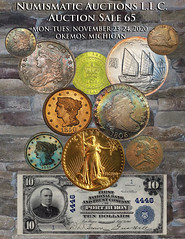
As noted earlier, the catalog for the Numismatic Auctions LLC sale 65 is online and available for viewing or download. The sale will be held November 23-24, 2020. Here are some additional lots that caught my eye - see the catalog and the earlier articles for more highlights. Thanks to Steve Davis for providing the photos. -Editor
Lot 1508: Albania 20 Franga Ari

Albania 20 Franga Ari, 1927-V. KM-12. Virtually Unc with nice luster, a few tiny marks. Popular Prince Skandenberg issue and a beautiful design, scarce. ($400+)
Who has the better mane? The Prince or the lion? -Editor
Lot 1510: Australia Victoria Gold Adelaide Pound
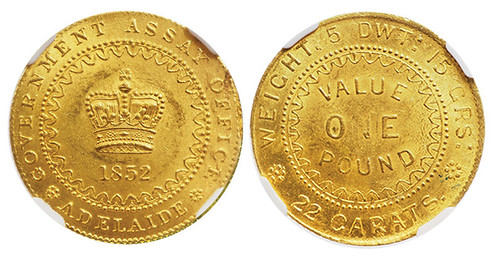
Rare Mint State Adelaide Pound. Colonial British, Southern Australia Victoria Gold Adelaide Pound, 1852, Type II. KM-2. NGC MS63, excellent luster, small natural flan flaw near edge at 3 o'clock obverse and a thin hairline die crack reverse. Wonderful eye appeal and a very rare grade! A coin with a rich pedigree. Accompanied by an old Baldwin's auction tag relating to its sale and one time price attained for the coin of $190,000 AUS on the ticket from the Rare Coin Company of Australia. An important opportunity to acquire an outstanding World Gold rarity in high grade, sure to entice many into the competition. ($18,000-20,000)
Great coin! -Editor
Lot 1861: Transylvania Ducat
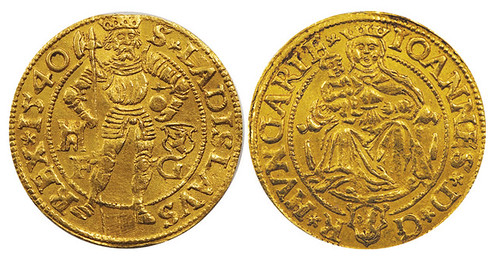
Transylvania Ducat, 1540-FG. Klausenburg Mint. Fr.121. Sharpness of EF, tiny area of lt tooling at ruler's feet obverse. Still a very presentable example of this rare Johann Zapolya Gold issue. ($500-750)
Cool early dated gold piece. -Editor
Lot 1909: British North Borneo Half Cent
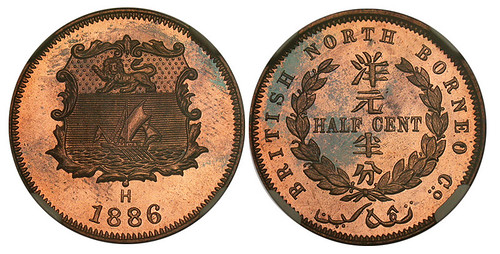
British North Borneo
1/2 Cent, 1886-H. KM-1. NGC SP66RB, predominantly red with tinges or iridescent navy blue and violet. Simply beautiful and rare so nice. ($300-350)
In my world coin collecting days I remember having a copper British North Borneo piece I was fascinated with. Great combination of cultures and languages. -Editor
Lot 1971: French Indo-China Cent
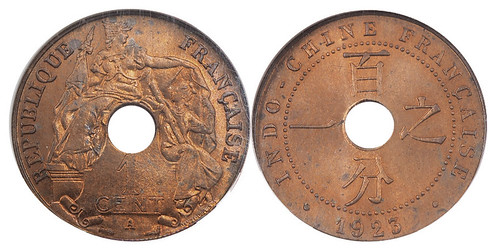
French Indo-China . Cent, 1923-A. Torch Privy. KM-12.1. NGC MS63RB. Neat example of this tough variety. ($300-400)
Another interesting combination of cultures and languages. -Editor
Lot 2011: Ferdinand and Maria Anna Marriage Taler

Schwarzenberg. Marriage Taler, 1696-MM. Dav. 7701, KM-116. NGC AU53, well struck and lustrous with hints of gold toning. A wonderful issue commemorating the Wedding of Ferdinand and Maria Anna. ($500-600)
These two lovebirds seem a little stern. Nice coin though. -Editor
Lot 2112: Leopold the Hogmouth Taler
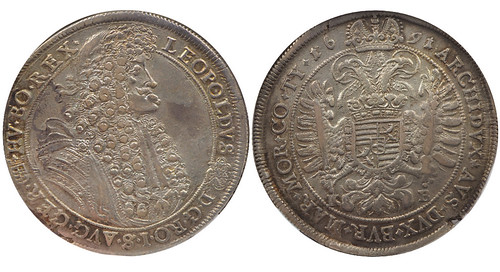
Hungary Taler, 1691-KB. Dav. 3261, KM-214.2. NGC XF45. A neat certified Leopold the Hogmouth Taler. ($250-300)
Gotta love a guy named Leo the Hogmouth. Another nice coin. -Editor
Lot 2137: Mexico Revolutionary Copper Centavo Ingot

Mexico Revolutionary. Oaxaca. Rectangular Copper Centavo Ingot, 1915. KM-709. PCGS Gold Shield MS62BN with hints of iridescent color. Nice, popular and scarce! ($400-600)
Interesting provisional issue. -Editor
To read the full catalog, see:
Sale 65 Session One US Coins to Gold Lots 1-1042 (pdf)
Sale 65 Session One US Commems, Paper and Exonumia Lots 1043-1507 (pdf)
Sale 65 Session Two World Gold to World Coins and Exonumia Lots 1508-2216 (pdf)
To read the earlier E-Sylum articles, see:
NUMISMATIC AUCTIONS LLC SALE 65
(https://www.coinbooks.org/v23/esylum_v23n37a26.html)
WASHINGTON QUARTER AND PEACE DOLLAR PLASTERS
(https://www.coinbooks.org/v23/esylum_v23n40a22.html)
NUMISMATIC AUCTIONS LLC SALE 65 CATALOG READY
(https://www.coinbooks.org/v23/esylum_v23n44a20.html)

COLTRANE NORTH CAROLINA CURRENCY TOUR
Stu Levine, Bruce Hagen, and Maureen Levine submitted this additional preview of North Carolina currency lots in the upcoming Heritage sale of the Mike Coltrane Collection, Part 1. Thanks! -Editor
The Mike Coltrane Collection
Enjoy a tour of North Carolina via Mike Coltrane's currency collection. The 385 lots of Colonial, Obsolete, and National Banknotes you will view each have their own unique character reflective of their geography and financial history. Together, they span 200 years of currency issuance and form a tremendous regional offering not often encountered from any state. All will be offered unreserved at auction on November 29, 2020, by Heritage Auctions.

North Carolina August 21, 1775 $5 Gov. Tryon's Palace at Newbern Fr. NC-150 PCGS Apparent Very Fine 25
This rare series and type was issued from Hillsborough in 1775 and has a very detailed vignette of Governor Tryon's Palace at Newbern. This historic landmark is a popular destination. Lot 95066.
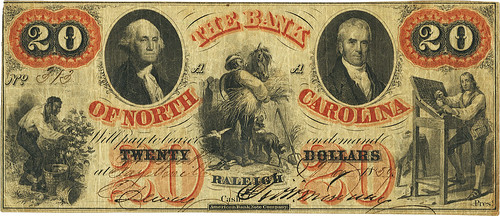
Fayetteville, NC - Bank of North Carolina (2nd), Branch at Fayetteville $20 Nov. 1, 1859 NC-55 G56 SENC PCGS Very Fine 25
The Bank of North Carolina succeeded the Bank of the State of North Carolina in 1859 and issued notes from several branch banks. This rare $20 type from Fayetteville with color titles features a rare vignette of Franklin setting type. Lot 95201.
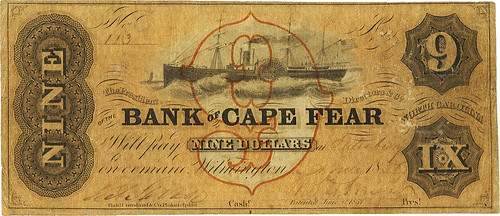
Salisbury, NC - Bank of Cape Fear, Branch at Salisbury $9 July 1, 1858 NC-90 G462b PMG Fine 12
The Bank of Cape Fear was founded in 1804 and issued notes from numerous locations, series, and denominations. Odd denominations like $6, $7, $8, and in this case $9, were frequently used in the 1850. This Salisbury branch example is in choice condition for the type. Lot 95231.
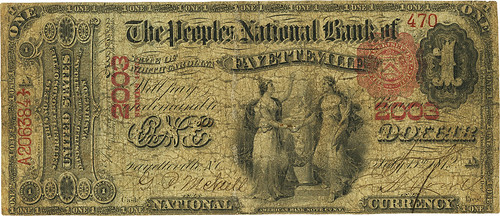
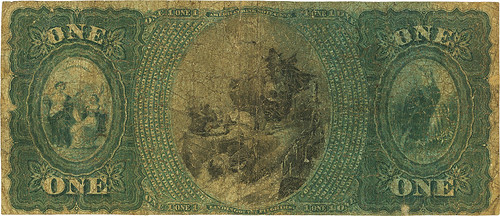
Fayetteville, NC - $1 1875 Fr. 383 The Peoples National Bank Ch. # 2003 PMG Very Good 10
The earliest North Carolina National Banknotes are very rare, and this is an important 1875 series note. These are infrequently encountered. Lot 95311.

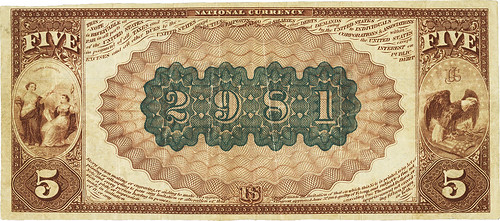
Salisbury, NC - $5 1882 Brown Back Fr. 467 The First National Bank Ch. # 2981 PMG Very Fine 25
All 1882 $5 "Brown Back" notes are popular with collectors. Examples from North Carolina are also not often offered, and are treasured when obtained. Lot 95362.
This important collection, featuring 385 lots, will be auctioned online on Sunday, November 29, 2020, commencing at 6:00 PM Central Time (7:00 P.M. Eastern). Lot viewing is available by appointment only at Heritage's Office in Dallas; contact Jose Berumen at JBerumen@ha.com or 214-409-1299. All lots are currently on view and open for bidding now at ha.com/62155.
To read the earlier E-Sylum articles, see:
COLTRANE COLLECTION SELECTIONS PART 1
(https://www.coinbooks.org/v23/esylum_v23n41a22.html)
COLTRANE COLLECTION SELECTIONS: BACK DESIGNS
(https://www.coinbooks.org/v23/esylum_v23n42a25.html)
COLTRANE WAR OF 1812 TREASURY NOTES
(https://www.coinbooks.org/v23/esylum_v23n43a25.html)
COLTRANE COLLECTION PART I U. S. CURRENCY PREVIEW
(https://www.coinbooks.org/v23/esylum_v23n44a18.html)
THE CROW, THE PITCHER, AND THE PEBBLE
(https://www.coinbooks.org/v23/esylum_v23n44a25.html)
COLTRANE NORTH CAROLINA CURRENCY
(https://www.coinbooks.org/v23/esylum_v23n45a19.html)
THE BOOK BAZARRE
FEISEL DECEMBER 2020 EXONUMIA SALE
Duane Feisel of Shingletown, CA will hold his next exonumia sale December 26-27, 2020. Here are some tokens that caught my eye. For a copy of the catalog, contact Duane at dhfeisel@frontier.com . -Editor
Lot 9: Valona Saloon Token
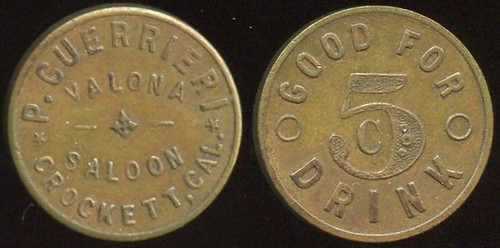
P. GUERRIERI / VALONA / SALOON / CROCKETT, CAL. // Good For / 5¢ / Drink, br rd 21mm. Listed 2F-3 $125/250.
I like the fancy numeral "5". -Editor
Lot 40: Mascot Saloon Token

MASCOT SALOON / C.M. DELGROVE / STENT / CAL // Good For / 1 / Drink, br rd 21mm. Listed 2F46 $125/250.
Another California token. The numeral "1" is unusual. -Editor
Lot 54: Montana Saloon Token

ALL NATIONS / SALOON / 106 S. MAIN ST. / HELENA / GERMAIN & NEVEU // Good For / 5¢ / In Trade, al rd 25mm. Listed 2.
"All Nations" is a slogan on lot 77 as well. -Editor
Lot 67: Alamo Saloon Token
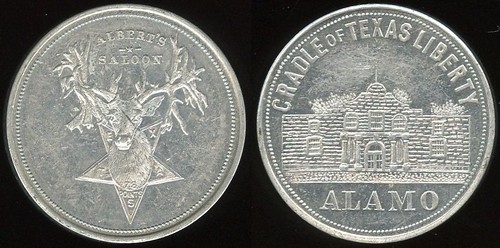
ALBERT'S / SALOON // (deer-head mounted on star inscribed T E X A S on points) / 78 / POINTS // Cradle Of Texas Liberty / (building) / Alamo, (San Antonio), al rd 32mm. Listed 10.
Nice aluminum piece. -Editor
Lot 77: Emma Johnson Brothel Tokens
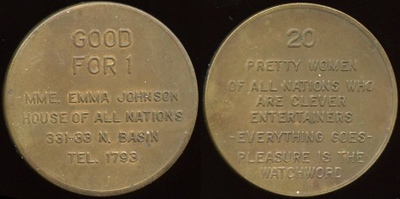
GOOD / FOR 1 / MME. EMMA JOHNSON / HOUSE OF ALL NATIONS / 331-33 N. BASIN / TEL. 1793 // 20 / Pretty Women / Of All Nations Who / Are Clever / Entertainers / Everything Goes- / Pleasure Is The / Watchword, (New Orleans LA), bz rd 35mm.
The fake and phony house of ill repute tokens are very plentiful, but this one appears to be a genuine vintage issue – see Crawford/Farber J/12 R9.
"Clever entertainers" - that's a euphemism I hadn't come across before. Very clever! -Editor
Lot 98: Civilian Conservation Corps Camp Store

CAMP STORE / CO. 1501, C.C.C. // Good For / 5¢ / In Trade, (Birch Creek MT), br rd 19mm. Listed Rubick EV7. Also other MT locations as well as Descanso CA.
A nice depression-era Civilian Conservation Corps token. Fancy "5". too. -Editor
Lot 104: Arizona Territory Post Trader
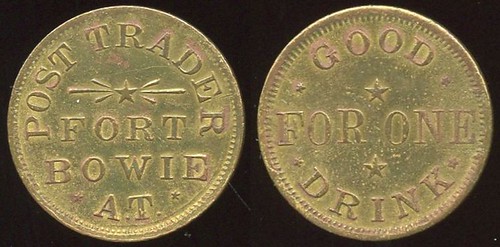
POST TRADER / FORT / BOWIE / A.T. // Good / For One / Drink, br rd 22mm. Listed AZ100a; Spooner FTB-680 R9 $3,000.
Rare Arizona Territory post trader token. Nice condition. -Editor
Lot 148: Lancaster Pike A.M.G. Token

PIKE / 5 / LANCASTER. PA. / LANCASTER. PA. / LANCASTER. PA. / A.M.G. // Pike / 3 / A.M.G. (a/i O&R), wm rd 28mm. Unlisted! Very unusual inscription.
Definitely unusual. Who issued it? What is "A.M.G."? Why both a "5" and a "3". -Editor
To view the lot images, see:
2020 - DECEMBER MAIL BID SALE
(https://collector-ca.smugmug.com/Tokens-Exonumia/2020-DECEMBER-MAIL-BID-SALE-1/)

NUMISMATIC NUGGETS: NOVEMBER 15, 2020
Here's a selection of interesting or unusual items I came across in the marketplace this week. Tell us what you think of some of these. -Editor
Indian Counterstamp on 1790-D French Sol
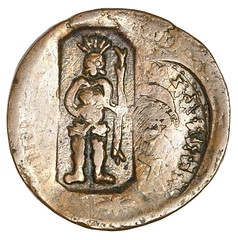
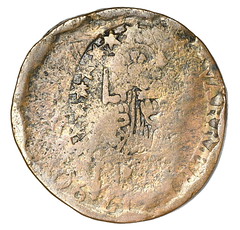
1790-D French Sol, Bee privy mark.
This is the Julius Guttag collection coin, lot 4880, and is PLATED on page 512 in Edgar Adams 1929 book that documented this famous collection.
This is a very interesting piece. The Indian is standing holding a bow, in relief, within a rectangular depression that has slanted corners. There is a second countermark found beneath the primary one and on the reverse. It appears to be another Standing Indian mark, but of a different style. These are very unusual countermarks. Their purpose is a mystery.
The Standing Indian icons that are found on the colonial currency notes of Massachusetts are very similar to the countermarks on this coin. Even the shape of the outline around them is similar (oval). See Newman, "The Early Paper Money of America".
KM 73.8 (Host Coin).
Fascinating piece. Offered on eBay by Bob Merchant. -Editor
To read the complete lot description, see:
1790-D French Sol, Counterstamp ( Standing Indian / Two Different Marks )
(https://www.ebay.com/itm/1790-D-French-Sol-Counterstamp-Standing-Indian-Two-Different-Marks/133572735559)
1902 Edward VII Specimen "Coronation" Medal


Edward VII gilt silver Matte Specimen "Coronation" Medal 1902 SP65 PCGS, BHM-3836. C&W-4410. 51mm. By Mappin & Webb. GOD SAVE THE KING GOD SAVE THE QUEEN 26 JUNE 1902 Female (Britannia) standing half-left, head left, blowing trumpet with left arm on shield, radiate sun behind Parliament building and bridge, boat on Thames / EDWARD THE SEVENTH ALEXANDRA QUEEN CONSORT crown between cameos of Edward on right and Alexandra on left, rose & thistle between, ribbon below reading DIEU ET MON DROIT. Mounted in oversized PCGS holder and comes with original green cardboard case.
From the November 18-19 Heritage online auction -Editor
To read the complete lot description, see:
Great Britain: Edward VII gilt silver Matte Specimen "Coronation" Medal 1902 SP65 PCGS,...
(https://coins.ha.com/itm/great-britain/great-britain-edward-vii-gilt-silver-matte-specimen-coronation-medal-1902-sp65-pcgs-/a/232047-63433.s)
Dolphin Medal by Rizzello
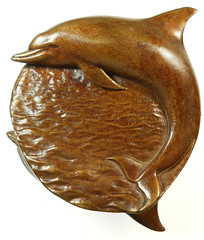

DOLPHIN by Rizzello published by the British Art Medal Society bronze about 95mm
A great medal from the eBay stock of Hedley Betts. -Editor
To read the complete lot description, see:
DOLPHIN by Rizzello published by the British Art Medal Society bronze about 95mm
(https://www.ebay.com/itm/164504317728)
Bicentennial Quarter Struck on Dime Planchet

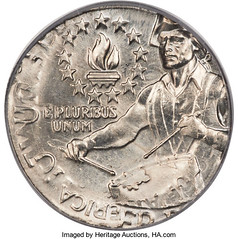
1976 25C Clad Bicentennial Washington Quarter -- Struck on 1976 10C -- MS62 PCGS. The quarter die impression is rotated approximately 90 degrees CW from the dime die impression. Most of the date on the dime is readable, and Roosevelts portrait remains mostly outlined. Reverse legends appear in remnants around the border. Brilliant and satiny with no major abrasions.
Very neat piece. From the upcoming December 15 Heritage Error Coinage sale. -Editor
To read the complete lot description, see:
1976 25C Clad Bicentennial Washington Quarter -- Struck on 1976 10C -- MS62 PCGS. The quarter die impression is rotat...
(https://coins.ha.com/itm/errors/1976-25c-clad-bicentennial-washington-quarter-struck-on-1976-10c-ms62-pcgs-the-quarter-die-impression-is-rotated-approxim/a/60179-92192.s)
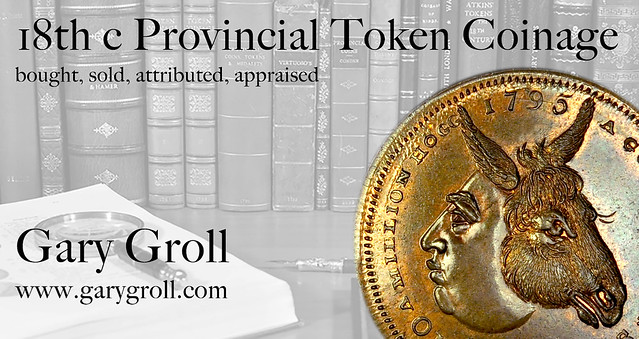
GOLD COINS FOUND IN JERUSALEM'S OLD CITY
Howard Berlin forwarded this Jerusalem Post article about a find of gold coins in the Old City. Thanks. -Editor
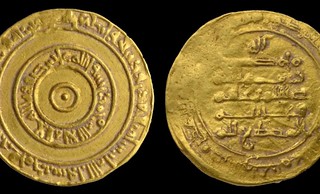 Putting in an elevator can be a lot of work, but there was a silver lining – or in this case, a gold one – when the Jewish Quarter Development Corporation started building an elevator to make the Western Wall Plaza more accessible to visitors.
Putting in an elevator can be a lot of work, but there was a silver lining – or in this case, a gold one – when the Jewish Quarter Development Corporation started building an elevator to make the Western Wall Plaza more accessible to visitors.
While the Antiquities Authority (IAA) was conducting archaeological excavations as part of the plan to build the elevator last month, IAA inspector Yevgenia Kapil discovered a juglet (small pottery jar). Some weeks later, as excavation director David Gellman was examining the finds, he emptied the contents of the juglet and found four pure gold coins dating to the Early Islamic period, more than a thousand years ago.
"To my great surprise, along with the soil, four shiny gold coins fell into my hand. This is the first time in my career as an archaeologist that I have discovered gold, and it is tremendously exciting," said Gellman.
According to IAA's coin expert Dr. Robert Kool, "The coins were in excellent preservation and were immediately identifiable even without cleaning. The coins date from a relatively brief period, from the late 940s to the 970s CE. This was a time of radical political change, when control over Eretz Israel passed from the Sunni Abbasid caliphate, whose capital was Baghdad, Iraq, into the hands of its Shi'ite rivals – the Fatimid dynasty of North Africa, who conquered Egypt, Syria and Eretz Israel in those years," he said.
"The profile of the coins found in the juglet are a near-perfect reflection of the historical events," Kool said. "Two gold dinars were minted in Ramla during the rule of Caliph al-Muti' (946–974 CE) and his regional governor, Abu 'Ali al-Qasim ibn al-Ihshid Unujur (946–961 CE). The other two gold coins were minted in Cairo by the Fatimid rulers al-Mu‘izz (953–975 CE) and his successor, al-‘Aziz (975–996 CE)."
Kool noted that this was a rare find. "This is the first time in 50 years that a gold cache from the Fatimid period has been discovered in Jerusalem's Old City.
To read the complete article, see:
Thousand-year-old gold coins found in Jerusalem's Old City
(https://www.jpost.com/israel-news/thousand-year-old-gold-coins-found-in-jerusalems-old-city-648486)

GOLD DINAR HOARD FOUND IN EGYPT
A small hoard of medieval gold dinars has been found in Egypt. -Editor
 A collection of 28 gold dinars as well as five small coins were discovered in Fayoum by Egyptian-Russian archaeological mission.
A collection of 28 gold dinars as well as five small coins were discovered in Fayoum by Egyptian-Russian archaeological mission.
The mission succeeded in unearthing the gold dinars while working at the archaeological site of Deir Al-Banat in Fayoum.
16 gold dinars are dating back to the era of the Caliph Al-Muqtadir Billah (295-317 AH / 908-932 AD) in addition to five parts of gold dinars also from the era of Caliph Al-Muqtadir, while 10 dinars dating back to the era of Caliph Al-Radi Billah (322-329 AH / 934-940 CE) and two dinars belong to the era of Caliph Al-Mu'tasim Billah (218-227 AH / 833-842 AD).
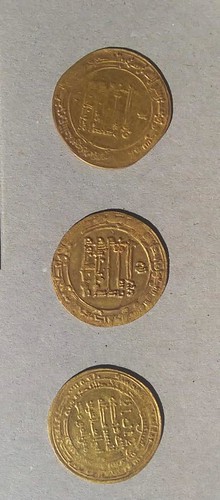 The newly uncovered gold dinars were covered by a linen roll tied to a clay seal. The clay seal house unclear symbols.
The newly uncovered gold dinars were covered by a linen roll tied to a clay seal. The clay seal house unclear symbols.
Osama Talaat, Head of the Islamic, Coptic and Jewish Antiquities sector at the Supreme Council of Antiquities; said that this discovery is the most important in the area; especially that it is the first season of the Egyptian-Russian mission in the northern part of Deir Al-Banat archaeological area.
Talaat added that a group of mummies dating back to the Greco-Roman era, were previously discovered in the same area the matter that indicates that this area was used during multiple ancient eras such as the Greek, Roman, Coptic and the Islamic period.
Found via The Explorator newsletter. To subscribe to Explorator, send a blank email message to: explorator+subscribe@groups.io. -Editor
To read the complete article, see:
Egypt uncovers 28 gold dinars dating back to Abbasid era in Fayoum
(https://www.egypttoday.com/Article/4/94186/Egypt-uncovers-28-gold-dinars-dating-back-to-Abbasid-era)

THE CURSE OF THE BURIED TREASURE
This November 9, 2020 New Yorker article examines the fate of two metal-detector enthusiasts discovered a Viking hoard. -Editor
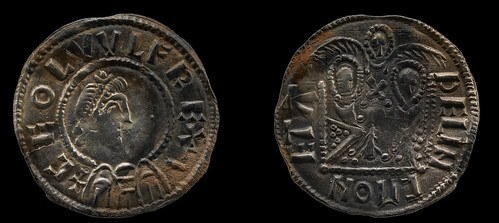
Coins of Ceolwulf II, of Mercia, and Alfred, of Wessex
For much of the early Middle Ages, Mercia was the most powerful of the four main Anglo-Saxon kingdoms, the others being Wessex, East Anglia, and Northumberland. In the tenth century, these realms were unified to become the Kingdom of England. Although the region surrounding Leominster (pronounced "Lemster") is no longer officially known as Mercia, this legacy is preserved in the name of the local constabulary: the West Mercia Police.
On June 2, 2015, two metal-detector hobbyists aware of the area's heritage, George Powell and Layton Davies, drove ninety minutes north of their homes, in South Wales, to the hamlet of Eye, about four miles outside Leominster. The farmland there is picturesque: narrow, hedgerow-lined lanes wend among pastures dotted with spreading trees and undulating crop fields.
Powell, a warehouse worker in his early thirties, and Davies, a school custodian a dozen years older, were experienced "detectorists." There are approximately twenty thousand such enthusiasts in England and Wales, and usually they find only mundane detritus: a corroded button that popped off a jacket in the eighteen-hundreds, a bolt that fell off a tractor a dozen years ago. But some detectorists make discoveries that are immensely valuable, both to collectors of antiquities and to historians, for whom a single buried coin can help illuminate the past.
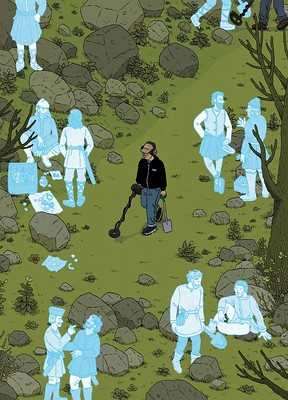 Scanning the environs of King's Hall Hill, the men suddenly picked up a signal on their devices. They dug into the red-brown soil, and three feet down they started to uncover a thrilling cache of objects: a gold arm bangle in the shape of a snake consuming its own tail; a pendant made from a crystal sphere banded by delicately wrought gold; a gold ring patterned with octagonal facets; a silver ingot measuring close to three inches in length; and, stuck together in a solid clod of earth, what appeared to be hundreds of fragile silver coins.
Scanning the environs of King's Hall Hill, the men suddenly picked up a signal on their devices. They dug into the red-brown soil, and three feet down they started to uncover a thrilling cache of objects: a gold arm bangle in the shape of a snake consuming its own tail; a pendant made from a crystal sphere banded by delicately wrought gold; a gold ring patterned with octagonal facets; a silver ingot measuring close to three inches in length; and, stuck together in a solid clod of earth, what appeared to be hundreds of fragile silver coins.
Although the Vikings did not use coins as a form of currency, they had a bullion economy-the trading of metals, based on weight and purity-and appreciated coins as portable forms of wealth. They coveted silver, which was not mined in their own lands; gold was even more prized. To obtain these precious metals, the Vikings stole or requisitioned the contents of Anglo-Saxon monastery vaults, which often included finely worked silver or gold, and chopped them into pieces, for purposes of trade-archeologists call such fragments hacksilver or hackgold-or melted them into ingots, for ease of weighing. A Viking hoard typically contains these forms of metal, and also coins minted by the Anglo-Saxon kings whose lands they had invaded.
Missteps from the very beginning of their adventure ensured an unhappy ending to the story. Proper protocols were not followed. -Editor
Gareth Williams, the curator of early-medieval coinage and Viking collections at the British Museum, became entranced by the Norse world as a small child, while paging through a library book. His grandmother, encouraging his passion, made him a helmet and a shield out of cardboard. He went on to study medieval history at the University of St. Andrews, in Scotland, where he completed his Ph.D., and then joined the British Museum.
In the summer of 2015, he was approached by a contact in the coin trade. As Williams told me recently, the contact informed him that several pieces of what appeared to be a Viking hoard were being offered to dealers. Some of the coins were Two Emperors, a type so rare that numismatists knew of only two extant examples: one was discovered in 1840, the other in 1950. A Two Emperor coin had never appeared on the open market, and a single one was valued at a hundred thousand dollars. A hoard with a substantial number of rare coins could be worth more than ten million dollars. The fact that individual coins were being offered to dealers suggested that the hoard was in danger of being broken up and vanishing onto the black market. According to Williams, the contact told him that he hadn't personally seen the coins but "understood immediately from the description that this must be undeclared treasure."
It's a fascinating and well-written tale that any numismatist should appreciate. See the complete article online. The hoard had an estimated value of "anywhere between four million and fifteen million dollars" and the finders are facing jail sentences. -Editor
To read the complete article, see:
The Curse of the Buried Treasure
(https://www.newyorker.com/magazine/2020/11/16/the-curse-of-the-buried-treasure)
THE BOOK BAZARRE
17TH-CENTURY COIN HOARD FOUND IN POLAND
From Poland comes this story of the mushroom hunter who ended up discovering an old hoard of coins. -Editor
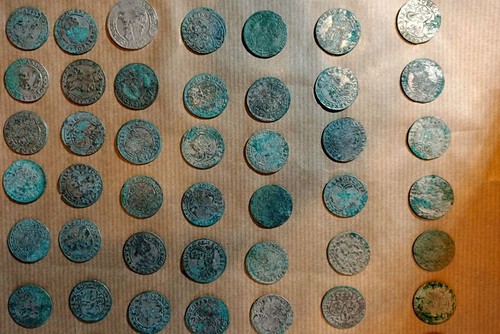
Boguslaw Ruminski had been looking for mushrooms in woods near his home in the tiny hamlet of Jezuicka Struga when he slipped and went sprawling into the undergrowth.
Putting his hand out to break his fall, he discovered he had grabbed a handful of coins.
Closer inspection revealed the six silver coins dated back to the reign of King Jan II Casimir.
Stunned Ruminski then noticed a further 60 coins spread around him before contacting the regional Conservation Office in Bydgoszcz to report his incredible find.
The following day, he returned with Conservation officers who after sweeping the ground with a metal detector found another seven coins.
With interest in the case rising among heritage conservationists, the following day another group of officials visited the site, this time with an archaeology professor from the Adam Mickiewicz University in Poznan.
They uncovered a further 13 coins, bringing the tally to 86.
All of the coins date from the second half of the 17th century during the reign of Jan II Casimir.
Most of the haul consists of six-groszy coins, although a number of higher-valued coins also appear, such as the ‘orta', a coin worth 18 groszy.
The coins date from between 1657 and 1667, pointing to their minting shortly after the Deluge, a series of wars with Sweden throughout the 17th century which wreaked havoc and destruction throughout the Polish-Lithuanian Commonwealth.
Found via The Explorator newsletter. To subscribe to Explorator, send a blank email message to: explorator+subscribe@groups.io. -Editor
To read the complete article, see:
Villager finds stash of 17th-century coins after falling off his bike while looking for mushrooms
(https://www.thefirstnews.com/article/village-man-finds-stash-of-17th-century-coins-after-falling-off-his-bike-while-looking-for-mushrooms-17393)
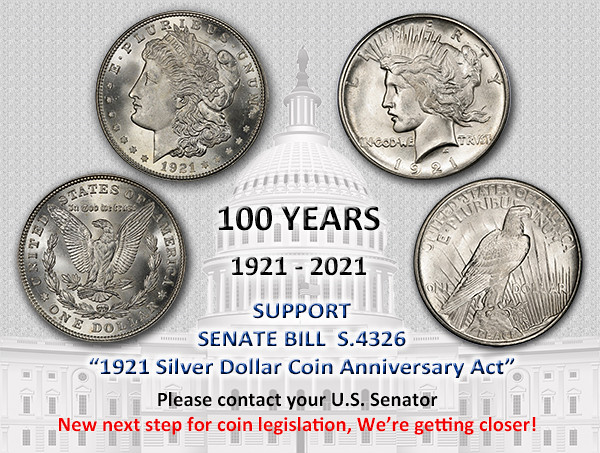
THE GREAT RECOINAGE OF 1696
Allan Davisson published this article in a November 13, 2020 email message in advance of the Davisson's E-Auction 37 closing Wednesday, November 18th. With permission, we're republishing it here. Thanks. -Editor
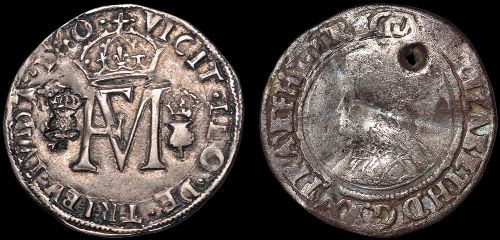
Revalued Mary Stuart testoon
The British section of E-Auction 37 has many notable lots–some nice hammered including an exceptional William II profile penny, further offerings from the Frank Robinson collection of British Milled, and more! Rather than take you though all the highlights, however, we are focusing on just one unassuming piece. Read on to see what makes the hole in lot 104 so special.
Base issue coinage-sharply devalued coinage that persisted after the remarkable efforts of Edward VI to reform English currency-plagued English trade. The lack of small change had still not been alleviated when in 1560 the remnants of low silver shillings left over from Edward's reign were revalued down to represent their underlying silver value. A portcullis countermark or a greyhound countermark told users what they could expect these sorry pieces to pass for.
The Scots had a different problem to solve in 1578 when their coinage was worth more than the bullion it contained. The value of silver had climbed so that a thirty-shilling coin now had 36 shillings worth of silver in it. This incentive to export silver coinage for melting meant that change would quickly disappear. After all, simply melting the piece brought about a quick 20% profit. The answer was to countermark these over-rich coins with a thistle countermark so that every user would know that what had been 30 shillings would now be accepted in trade as a 36 shilling 9 pence piece.
The problem in 1696 was more related to the 1560 issue-coinage with a face value that did not match the underlying silver value. In 1560 it had been debased metal. By 1696 the problem was size reduction of the currency by clipping around the edge. Shaving slivers of silver could be very profitable if someone could leave just enough of the original coin that it would still pass for full value. The problem was that the practice was wide-spread and repeated to such an extent that there was little money-particularly in and around London-that was worth what it was supposed to be worth.
It was a new era in England. William III was the ruler. Sir Isaac Newton was running the Mint and there was a crisis in small change. Hammered coins were still monetized (with the exception of the Commonwealth issues) and were still in demand for daily use, even though that use was problematic because of all the clipping. Unclipped and the "unclippable" milled coins that had been minted for 30 years were hard to find for several reasons. Milled coins were minted in limited quantities because the Mint, dependent on silver coming to it, was not getting nearly enough to be able to keep up with demand. People hoarded the full value pieces, recognizing that they could be worth more regardless of the designated denomination. As the value of silver fluctuated these full-weight silver coins were exported to be melted whenever the bullion value exceeded the denominated value.
To rectify all this, Newton proposed a plan to take in hammered coins at full face value, clipped or not, for reminting. This brought about the act authorizing The Great Recoinage of 1696. No clipped crowns or half crowns after February 3rd, and no clipped shillings or sixpences after February 22nd would be considered current in London or within 40 miles. After March 2nd no clipped coin could be considered as current except for government payments.
This was an expensive process for the Mint. While coinage was reestablished and hammered coinage was no longer current, estimates published soon after the recoinage placed the government's loss at a million pounds because they took in clipped coins at full value. A seven-year tax on houses based on the number of windows in the house was put in place (and you can still see London houses from the era with windows bricked up to escape the tax).
This procedure allowed the process to stretch recoining out over successive periods to avoid the Mint becoming overwhelmed with silver. Branch mints were set up around the country-Bristol, Chester, Exeter, Norwich, and York. By taking in silver and coining at all these locations, the new coins could be produced and distributed more quickly than if everything were sent to London. (William III halfcrowns, shillings, and sixpences from these mints all bear an initial indicating where they were struck.)
At the same time, there was still a need to have circulating coins, so the government opted to mark unclipped coins and return them to circulation. The Act was passed on January 17th, 1696 and February 10th was the deadline when the only coins that would be current would be those that had been punched. The terms were explicit: "...unclipt hammered Monies should…before the tenth day of February one thousand six hundred and ninety five… call such unclipped monies to be struck through about the middle of every piece, with a solid punch that should make a hole without diminishing the Silver." "Unclipt" was defined as having "both rings." After this, any appropriately holed coin would be forfeit if it was subsequently found clipped.
There is debate about who was responsible for this fast method of marking "good coin"-the Treasury/Mint, Justices of the Peace along with local authorities, or individuals who recognized that their coins would lose value after the deadline. A February 1984 Seaby Bulletin analysis by I. D. Brown notes that the only solution to getting the work done was to allow "each person to mark the good coins in his possession with a simple device such as a hammer and nail."
The piece shown here came from a metal detector's accumulation of finds during guided trips to the English countryside. It is an unclipped second issue groat of Elizabeth with a hole punched near the middle that avoids the portrait. The jagged edges of the hole match exactly with images of other "punched" coins of the era.
Such pieces prove to be very rare-few have survived as was first noted in articles in the Seaby Bulletin, particularly in a 1983 article by Garry Charman. Considering collector preferences and tastes, coins with such holes in them tend to be tossed into the melting pot and a piece such as this was simply lost at the time and only dug up recently when we are more aware of this little side-trip in numismatic history.
For more information on the sale, see:
https://davcoin.com/
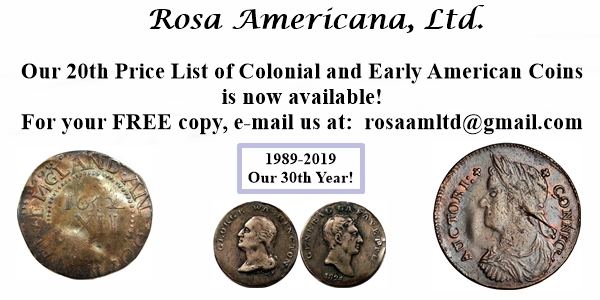
SIAMESE AND THAI ORDERS AND DECORATIONS
Morton & Eden are offering an impressive collection of Siamese and Thai Orders and Decoration in their upcoming sale. -Editor
The collection, which was assembled over a period of many years by a private collector from Scandinavia comprises 48 lots and is estimated to fetch in excess of £125,000 (lots 1455-1503).
Morton & Eden said: ‘We are delighted to be offering this specialist collection of Siamese and Thai Orders in our forthcoming sale. Many of the awards in this collection are exquisitely made, rare to the market, and in some cases unique. Furthermore some boast a royal provenance or attribution.'
The highlights include insignia of The Most Illustrious Order of Chula Chom Klao, Grand Cordon (Special Class), dating from the early 20th century. The Most Illustrious Order of Chula Chom Klao was founded by King Chulalongkorn (Rama V) on 16 November 1873 to commemorate the 90th Anniversary of the Chakri dynasty.
The insignia comprise an elaborate gold and enamelled collar, a sash/collar badge, with central portrait of Rama V and bearing in gold letters the motto "I will preserve the royal family line", together with a breast star bearing central diamond, a Junior Companion's silver medal, a riband bar and a lapel rosette. This highest class, namely that of the Knight Grand Cordon (Special Class), was generally only bestowed upon Thai Royalty and foreign Heads of State. Extremely fine and exceptionally rare, the lot is housed in its fitted case and is estimated to fetch between £30,000 and £40,000 (lot 1470)
Equally notable is a set of insignia of The Most Illustrious Order of the House of Chakri, founded by King Chulalongkorn (Rama V), in honour of King Buddha Yodfa Chulaloke (Rama I, 1782-1809) and in celebration of the Centenary of the Chakri dynasty and the foundation of Bangkok. This opulent set, which includes a collar, a pendant badge, a sash badge and a breast lavishly decorated with gold, diamonds and enamels, was once in the collection of Karl I of Austria. It is also estimated to fetch £40,000 to 60,000 (lot 1472)
Another medal with a royal provenance is King Prajadhipok's (Rama VII) Royal Cypher Medal, (1926-35), a first class diamond-set gold breast badge which was awarded to Princess Caroline Mathilde of Denmark (1912-1995). Princess Caroline Mathilde (1912-95) was the daughter of Prince Harald of Denmark, the youngest son of Frederik VIII. On 8 September 1933 she married her first cousin Prince Knud, the second son of Christian X. On the accession of Frederik IX in 1947, Knud became heir apparent to the Danish throne since Salic law in force at the time excluded Frederik IX's daughters from the succession, and Caroline Mathilde was therefore Crown Princess. Following a national referendum in March 1953, the succession law was changed to allow the daughters of King Frederik IX the right of succession, his eldest daughter Margarethe (the present Queen Margarethe II) replacing Knud as heir apparent. Knud and Caroline Mathilde received the titles Hereditary Prince and Princess of Denmark. A portrait photograph of the Crown Princess wearing the badge is also included in the lot, which is estimated to fetch £10,000 to 15,000 (lot 1473)
The Scandinavian Collection: Orders, Medals and Decorations of Siam and Thailand is to be sold by at auction by Morton & Eden in London on Thursday 19 November 2020 as part of a general sale of Orders, Medals and Decorations.
To read the complete article, see:
Important Thai Orders, medals and decorations to be sold at auction
(https://artdaily.cc/news/130095/Important-Thai-Orders--medals-and-decorations-to-be-sold-at-auction#.X6857MhKhPY)

RUST RARE COIN STOCK SALE
There are no numismatic details in this article from Utah's Deseret news, but interested buyers may still have a chance to bid on coins being liquidated in the Rust Rare Coin Ponzi scheme case. -Editor
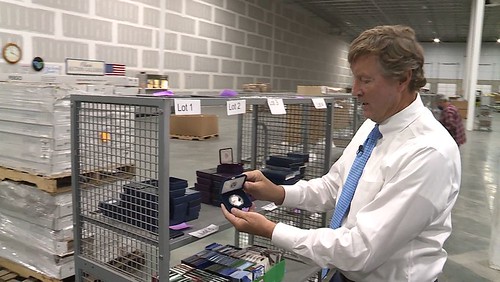
Rob Olson, owner of Erkelens & Olson Auctioneers
A Utah auction house is expecting big business for a rare coin collection.
Thousands of gold, silver and unique coins are currently being auctioned by Erkelens & Olson Auctioneers in Salt Lake City.
"You typically don't have this kind of product in one area at one time," said Rob Olson, who owns Erkelens & Olson. The auction is being held online instead of in person because of coronavirus concerns and the limited number of people allowed inside the building at one time.
The coins belonged to the owner of Rust Rare Coin in downtown Salt Lake City.
Two years ago, Rust Rare Coin was investigated by the FBI and the Securities Exchange Commission after its owners were accused of running a Ponzi scheme, money laundering, and defrauding at least 700 investors of millions of dollars.
One family member, 61-year old Denise Gunderson Rust, has pleaded guilty to money laundering and was sentenced to 18 months in jail and three years probation.
A U.S. District judge has also ordered her to pay $1.7 million in restitution.
Her ex-husband, Gaylen Rust, and their son, Joshua Rust, are also facing federal charges. The criminal cases against them are pending, with a trial currently scheduled for March 2021. The SEC complaint is on hold until the criminal cases are resolved.
Olson's company was chosen by a federal appointed receiver to auction the items and raise money to repay victims of the Ponzi scheme.
To read the complete article, see:
Rare coins being auctioned to help pay victims of Utah Ponzi scheme
(https://www.deseret.com/utah/2020/11/14/21565487/rare-coins-auctioned-pay-victims-of-ponzi-scheme-rust-rare-coin)
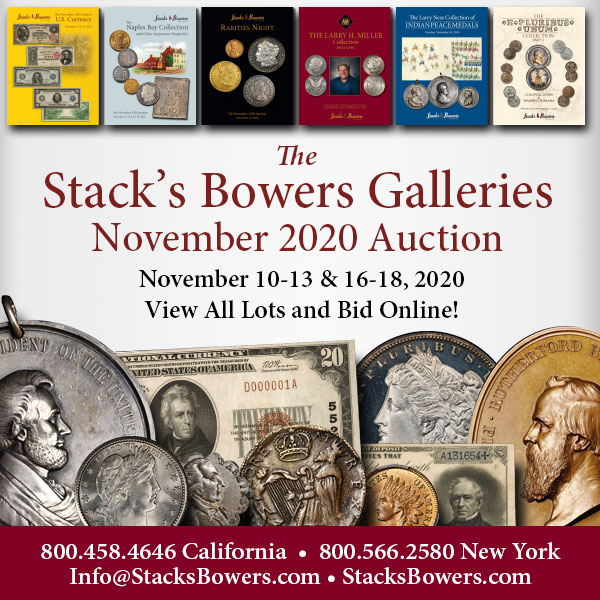
STOLEN BOOKS FOUND IN ROMANIA RETURNED
The cache of stolen rare books found in Romania have largely been returned to their grateful owners. -Editor
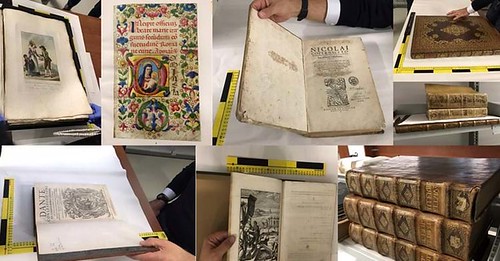
Rare books stolen in a ‘Mission: Impossible-style' raid on a warehouse in west London in 2017 have been returned after a joint operation with Met police officers and Romanian authorities.
Around 240 have been given back to the dealers who owned them and had used the warehouse for storage ahead of their transportation to The California International Antiquarian Book Fair.
The items, including incunabula, early books and manuscripts, were taken from trunks housed in a storage unit in Feltham, near Heathrow, on the night of January 29, 2017.
After more than three years of investigation the books were recovered in September from a hidden underground store in a rural house in Romania.
Detectives from the Met's Specialist Crime South travelled to Romania to carry out identification of the books and met with four of the five victims, along with Romanian police officers and the National Library of Romania.
Unfortunately, 83 of the books had suffered some damage, ranging from slight to severe. This mainly consisted of damage from water and mould because of the way the books had been hidden underground, and broken spines believed to be from poor methods of transportation.
Twenty-eight were assessed as having substantial damage and two were so severely damaged they have been initially assessed as being beyond repair.
However, four of the stolen books have still not been recovered:
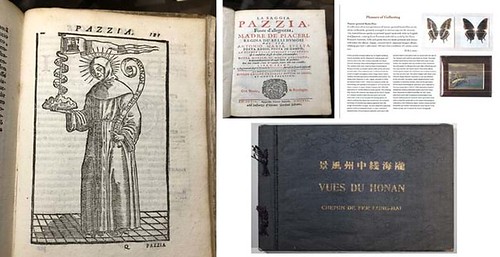
Be on the lookout for these
Italian book dealer Natalina Bado said: "Reviewing and touching our books three years and nine months after the theft was a profound joy. Every time we were about to view a book we had many expectations regarding the conditions and when we found our works in good condition it was a great happiness for us, just as it was a deep pain to see some damaged books."
To read the complete article, see:
Police return £2.5m rare books to dealers but four still missing after west London raid
(https://www.antiquestradegazette.com/news/2020/police-return-25m-rare-books-to-dealers-but-four-still-missing-after-west-london-raid/)
To read the earlier E-Sylum article, see:
LOOSE CHANGE: SEPTEMBER 20, 2020 : Stolen Books Found in Romania
(https://www.coinbooks.org/v23/esylum_v23n38a31.html)
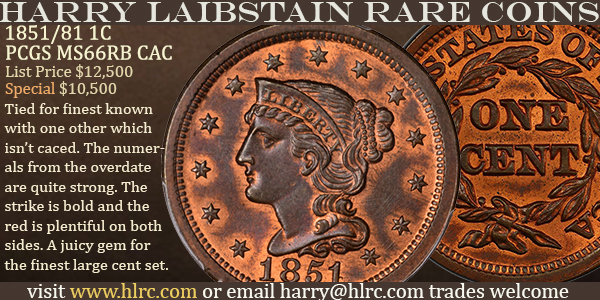
LOOSE CHANGE: NOVEMBER 15, 2020
Here are some additional items in the media this week that may be of interest. -Editor
CoinWeek Profiles Hobo Nickels
On November 13, 2020 CoinWeek published a nice profile on Hobo Nickels. -Editor
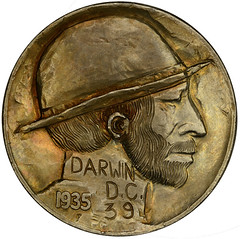 The hobo nickel is a sculptural art form involving the creative modification of small-denomination coins, essentially resulting in miniature bas reliefs. The nickel, because of its size, thickness, and relative softness, was a favored coin for this purpose. However, the term "hobo nickel" is generic, as carvings have been made from many different denominations.
The hobo nickel is a sculptural art form involving the creative modification of small-denomination coins, essentially resulting in miniature bas reliefs. The nickel, because of its size, thickness, and relative softness, was a favored coin for this purpose. However, the term "hobo nickel" is generic, as carvings have been made from many different denominations.
Classic old hobo nickels (1913-1940)
Many talented coin engravers, as well as newcomers, started creating hobo nickels in 1913, when the buffalo nickel entered circulation. This accounts for the quality and variety of engraving styles found on carved 1913 nickels. More classic old hobo nickels were made from 1913-dated nickels than any other pre-1930s date.
To read the complete article, see:
Coin Profiles – Hobo Nickels
(https://coinweek.com/coins/coin-profiles/coin-profiles-hobo-nickels/)
The Purse Made from a Book
For bibliophiles, here's a February 2020 Atlas Obscura article I came across this week about an unusual 17th century Italian purse housed at the Boston Public Library - it's made from a 15th century book! -Editor
 THE PURSE IS PLENTY PRETTY on the outside: emerald silk, embroidered with dainty yellow, purple, and peachy-pink blooms, arcing out of metallic vases. But things get more interesting when one pries the lustrous little parcel open. Between the seams and under the stitches, there's something faded and faint, but unmistakable: a blue "Q" tucked between two stems, a stylized red "M" near one edge, rows and rows of tidy, brownish letters. In the belly of the bag, where one might expect just fabric, there is instead text-four parchment fragments, cut from a medieval manuscript.
THE PURSE IS PLENTY PRETTY on the outside: emerald silk, embroidered with dainty yellow, purple, and peachy-pink blooms, arcing out of metallic vases. But things get more interesting when one pries the lustrous little parcel open. Between the seams and under the stitches, there's something faded and faint, but unmistakable: a blue "Q" tucked between two stems, a stylized red "M" near one edge, rows and rows of tidy, brownish letters. In the belly of the bag, where one might expect just fabric, there is instead text-four parchment fragments, cut from a medieval manuscript.
Whoever made the bag, likely in Italy in the 17th century, started by deconstructing a volume and snipping the bifolia-the sheets of parchment that were folded to make the pages-into four tapered triangles. They stitched these together around the edges to form a little skeleton to build the rest of the bag around. The fragment is "an integral part of the purse itself," says Jay Moschella, curator of rare books at the Boston Public Library, who recently acquired the object from Bernard Quaritch Ltd., a London dealer. The bits of bifolia wouldn't otherwise be visible, but are here because the lining has gone missing. "It's the non-decorative insides you weren't meant to see," he adds. "It looks fascinating now, but when it was produced, you would have had no idea that there was a fragment inside of it."
To read the complete article, see:
How a Trashed Italian Manuscript Got Sewn Into a Sweet Silk Purse
(https://www.atlasobscura.com/articles/manuscript-fragments-purse-lining)

BRUNEL'S PROBLEMATIC GOLD HALF-SOVEREIGN
In earlier issues we discussed the great British engineer Isambard Kingdom Brunel, honored on the medal shown below. There's another numismatic connection it turns out - the November 11, 2020 issue of the Delancey Place blog tells of Brunel's predicament in 1843 when he managed to accidentally get a gold half-sovereign lodged in his throat. -Editor
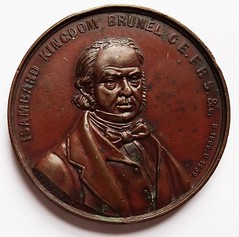
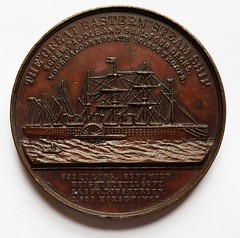
1859 Isambard Kingdom Brunel Great Eastern Steamship medal
"In the spring of 1843, the great British engineer Isambard Kingdom Brunel took a rare break from his labors -- at the time he was building the SS Great Britain, the largest and most challenging ship ever to come off a drawing board to that time -- to amuse his children with a magic trick. Things didn't go quite to plan, however. Midway through the entertainment Brunel accidentally swallowed a gold half-sovereign coin that he had secreted under his tongue. We may reasonably imagine Brunel's look of surprise followed by consternation and perhaps slight panic as he felt the coin slide down his throat and lodge at the base of his trachea. It caused him no great pain, but it was uncomfortable and unnerving because he knew that if it shifted even slightly it could choke him.
"Over the next few days, Brunel, his friends, colleagues, family, and doctors attempted every obvious remedy, from slapping him hard on the back to holding him aloft by the ankles (he was a small man and easily lofted) and shaking him vigorously, but nothing worked. Seeking an engineered solution, Brunel designed a contraption from which he could hang upside down and be swung in wide arcs in the hope that motion and gravity together would make the coin fall out. That didn't work either.
"Brunel's plight became the talk of the nation. Suggestions poured in from every quarter of the country and from abroad, but every attempted remedy failed. At length, the eminent physician Sir Benjamin Brodie decided to attempt a tracheotomy, a risky and disagreeable procedure. Without benefit of anesthetic -- the first use of anesthetic in Britain was still three years off -- Brodie made an incision in Brunel's throat and tried to extract the coin by reaching into his airway with long forceps, but Brunel couldn't breathe, and coughed so violently that the attempt had to be abandoned.
"Finally, on May 16, more than six weeks after his ordeal began, Brunel had himself strapped into his swinging contraption once again and set in motion. Almost immediately, the coin fell out and rolled across the floor.
"Very shortly afterward, the eminent historian Thomas Babington Macaulay burst into the Athenaeum Club in Pall Mall and shouted, 'It's out!' and everyone knew at once what he meant. Brunel lived the rest of his life without complications from the incident and, as far as is known, never put a coin in his mouth again.
"I mention all this here to make the point if it needed making, that the mouth is a place of peril. We choke to death more easily than any other mammal. Indeed, it can reasonably be said that we are built to choke, which is clearly an odd attribute to go through life with -- with or without a coin in your trachea."
To read the complete article, see:
DO NOT PUT FOREIGN OBJECTS IN YOUR MOUTH -- 11/11/20
(https://www.delanceyplace.com/)
To read the earlier E-Sylum articles, see:
FATHER AND SON: THE ENGINEERS BRUNEL
(https://www.coinbooks.org/esylum_v19n31a15.html)
MORE ON FATHER AND SON ENGINEERS BRUNEL
(https://www.coinbooks.org/esylum_v19n32a30.html)

FEATURED WEB SITE: MINING MEMORABILIA
This week's Featured Web Site is the National Mining Memorabilia Association.
It is the intent of this site to introduce those visiting it to the background and history related to the many fascinating types of mining memorabilia commonly collected and researched in the United Kingdom.
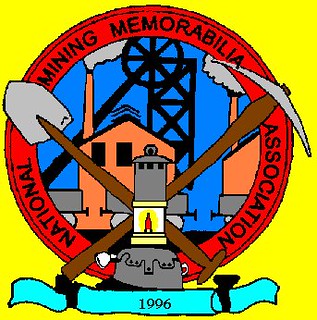
The site covers multiple forms of tokens: Carriers, Copperas, Commercial & Truck Tokens, Pit Checks, Tallies, Motties, Tickets, Passes or Tokens, plus Medals, Awards and Badges. -Editor
http://www.mining-memorabilia.co.uk/


